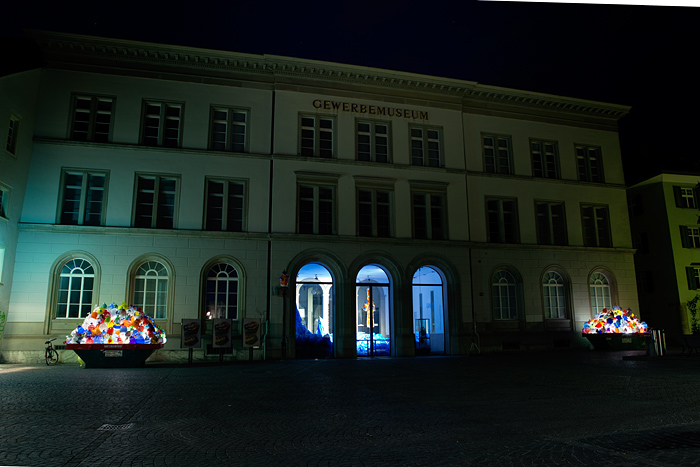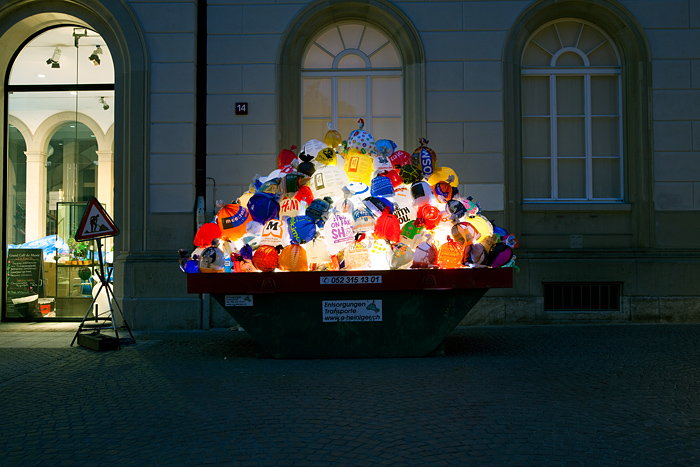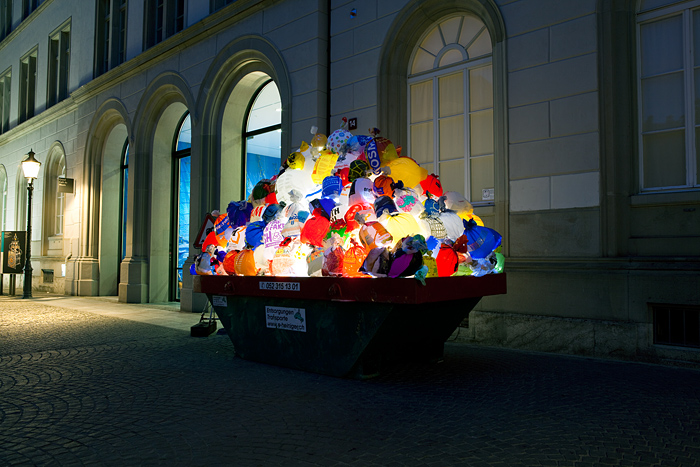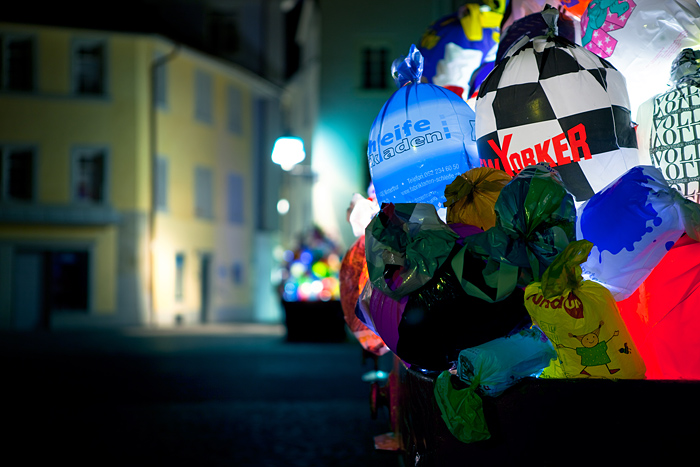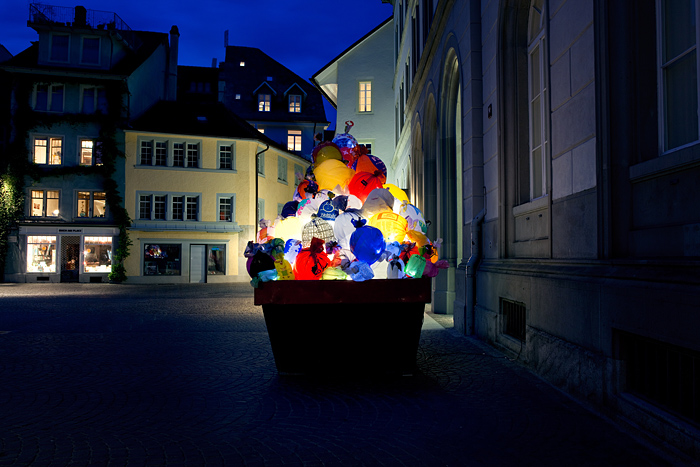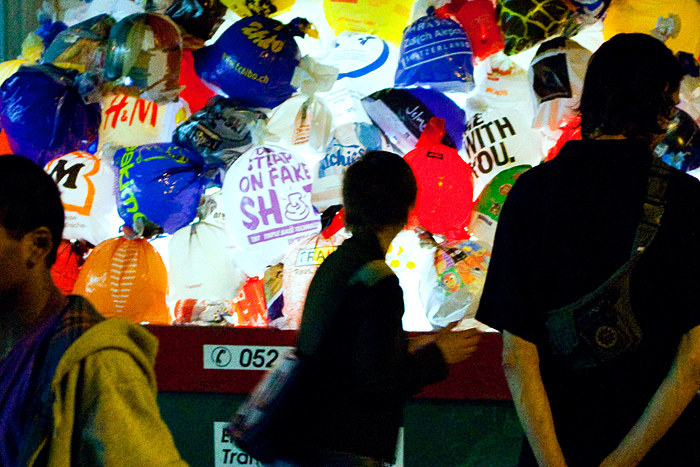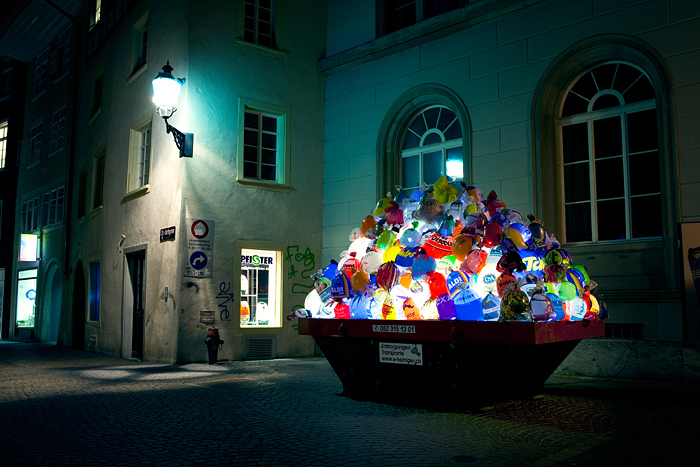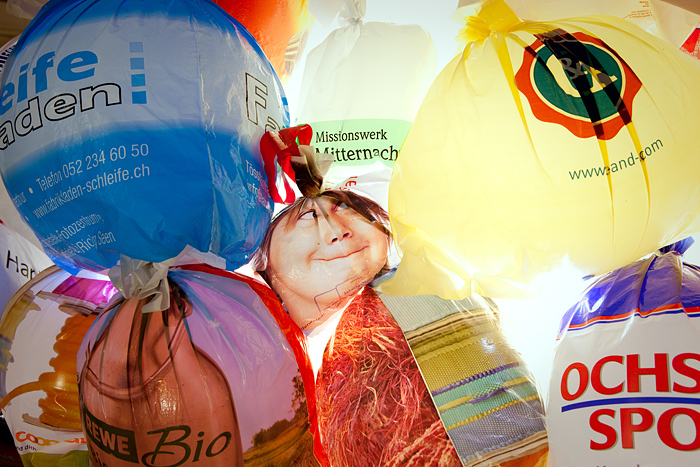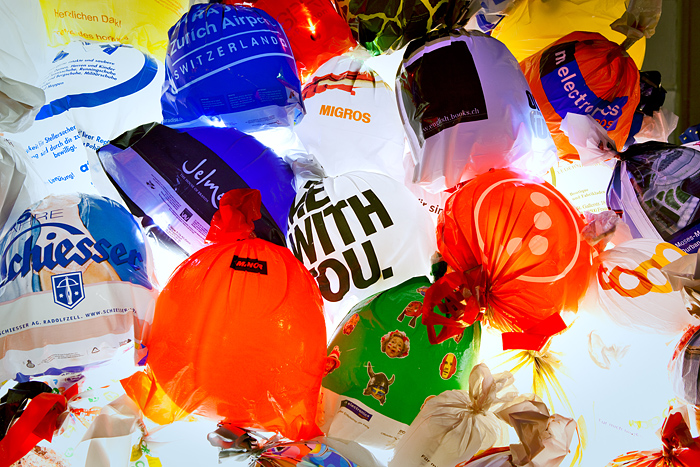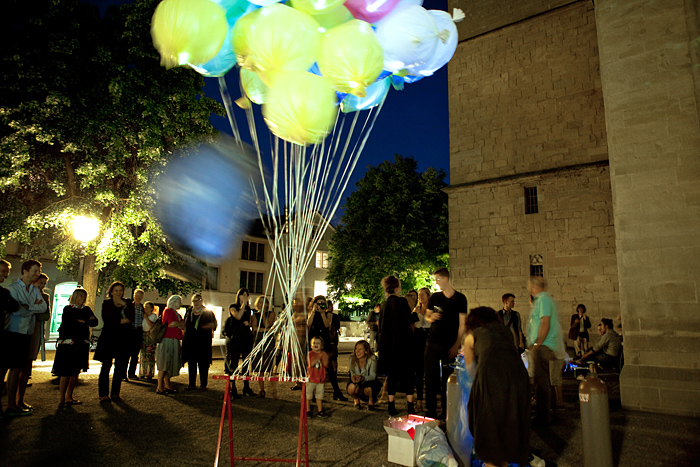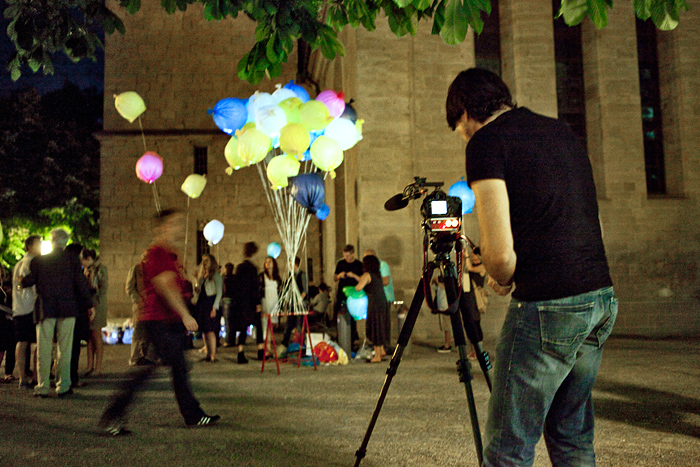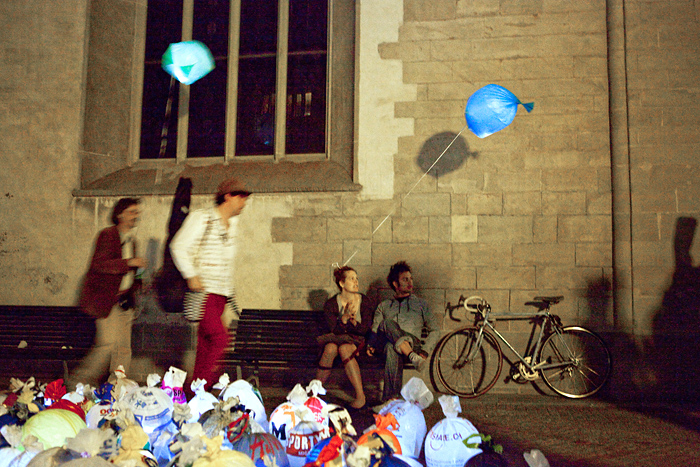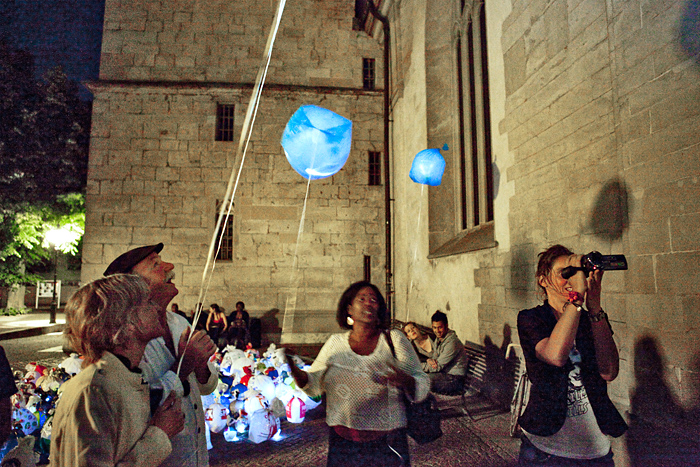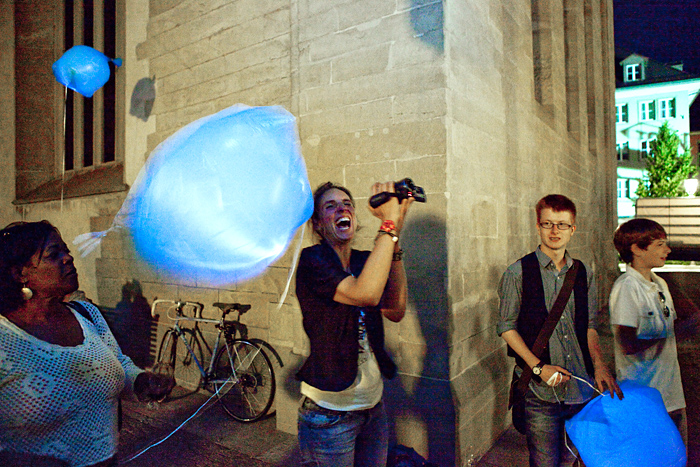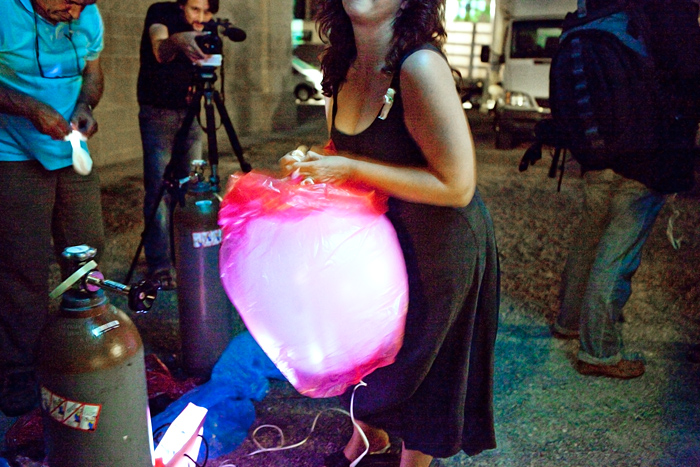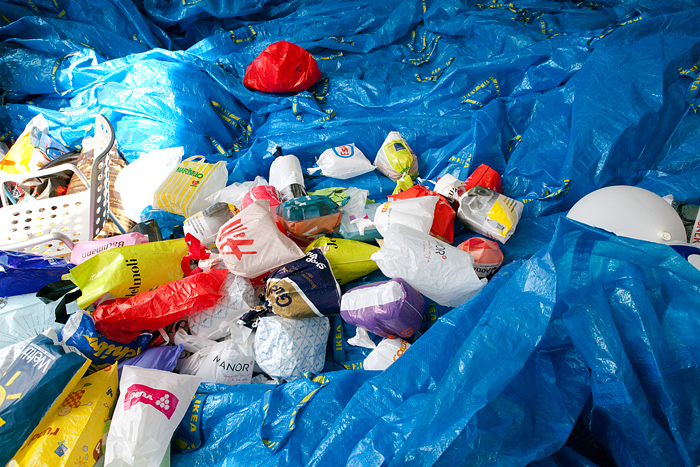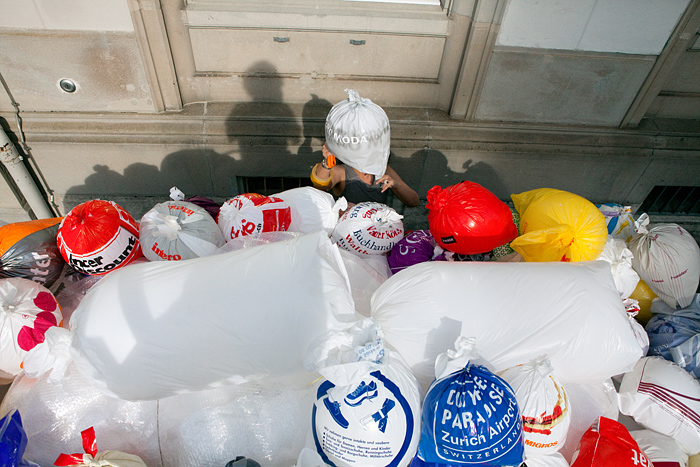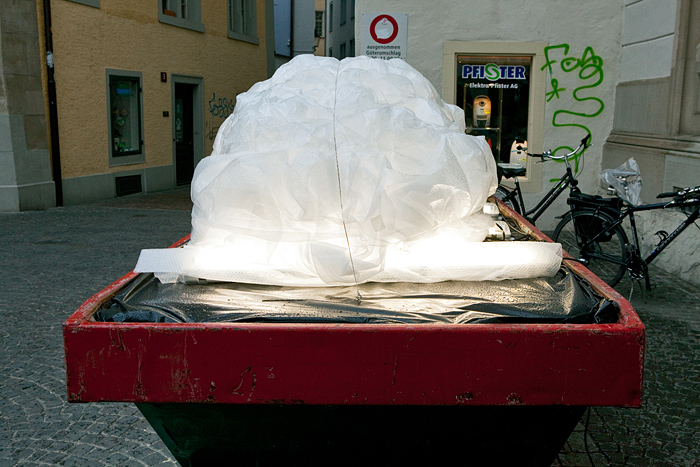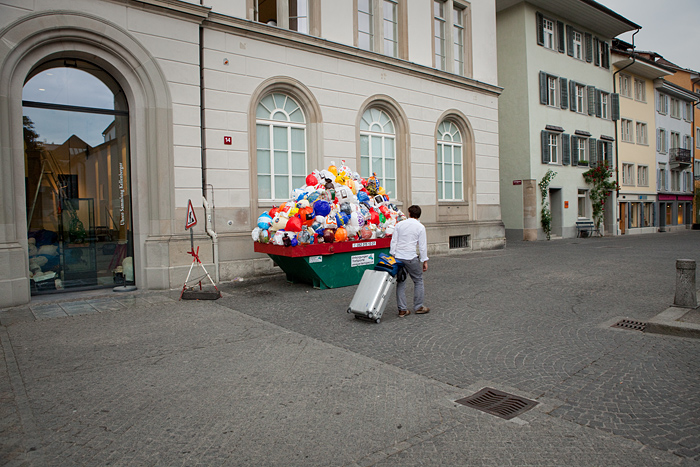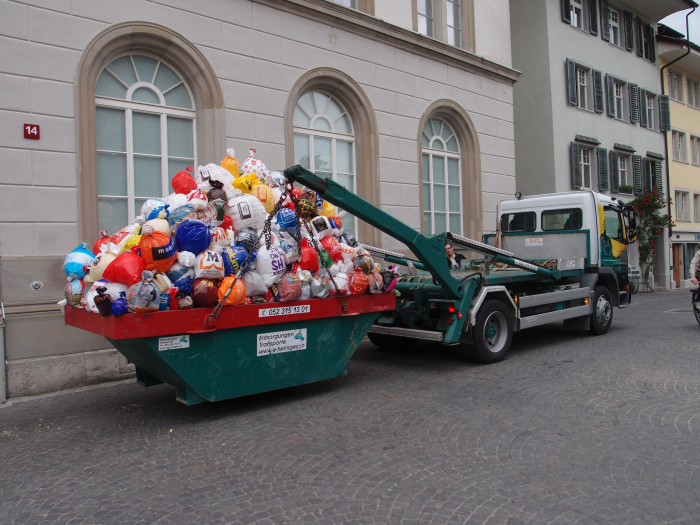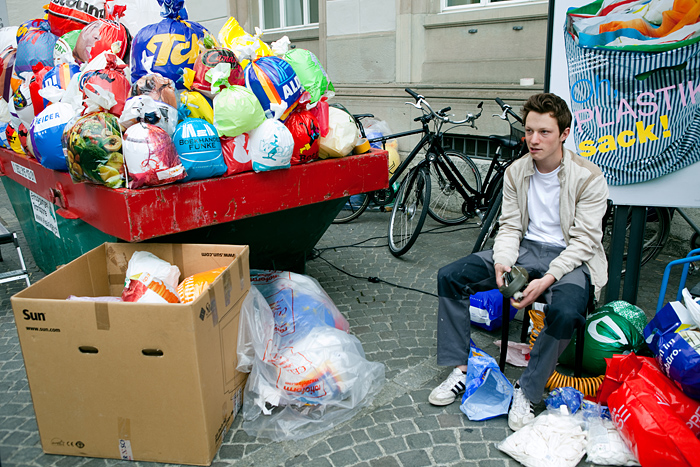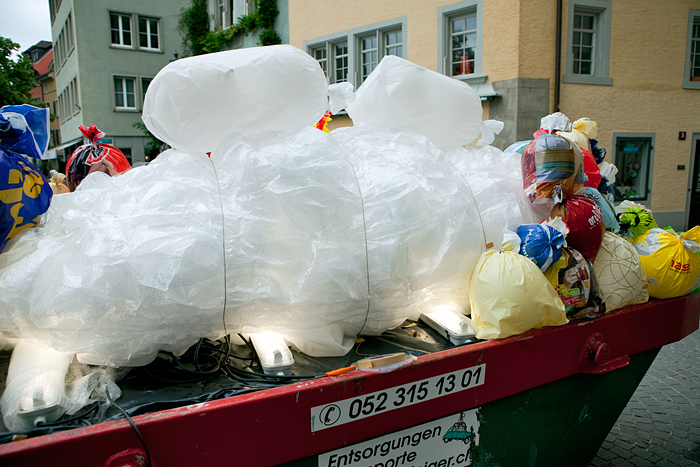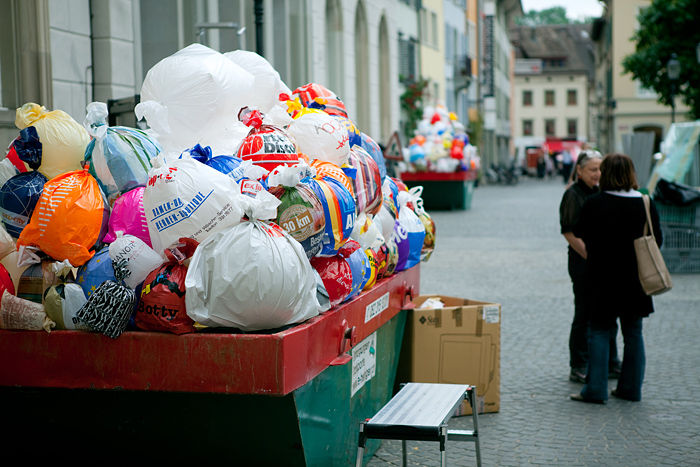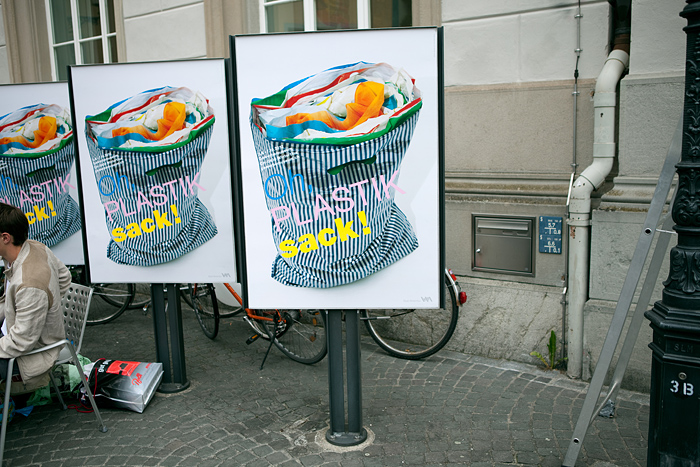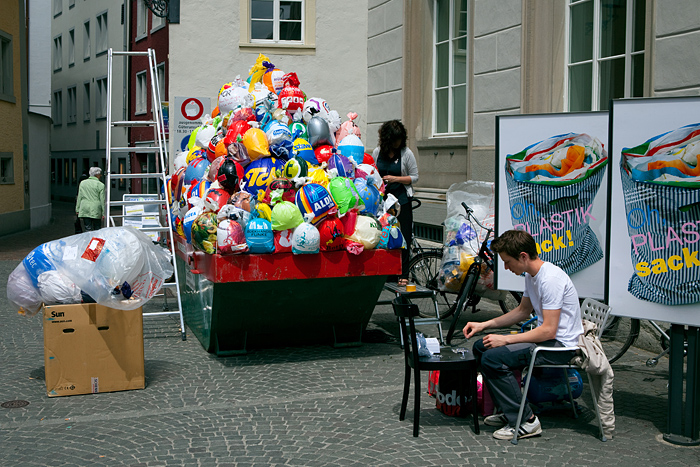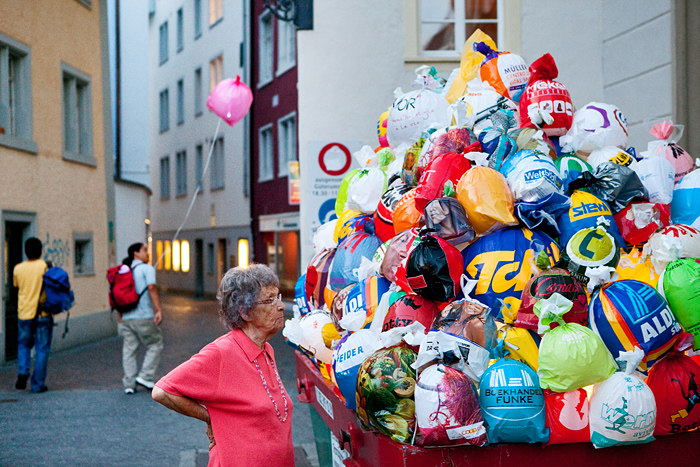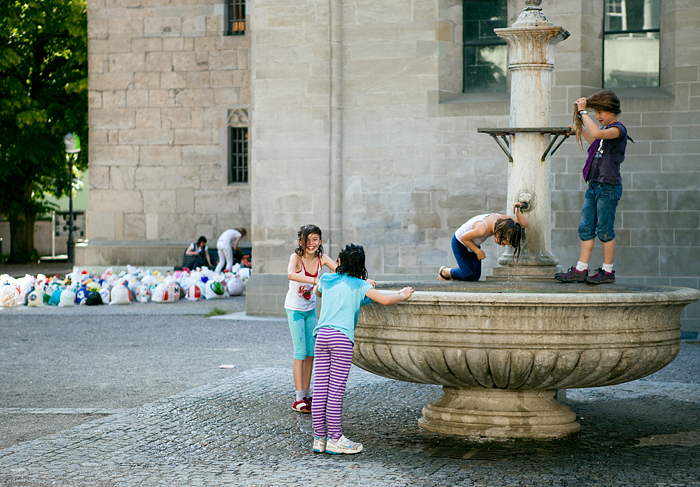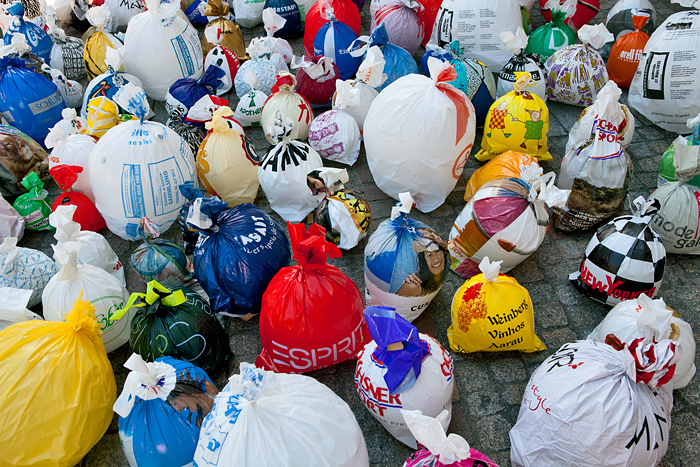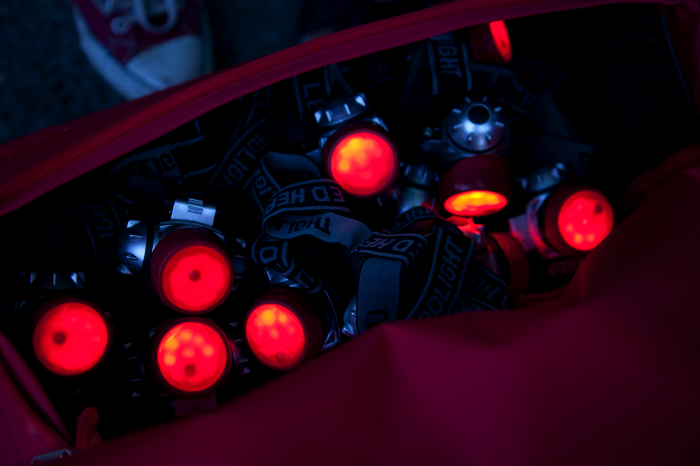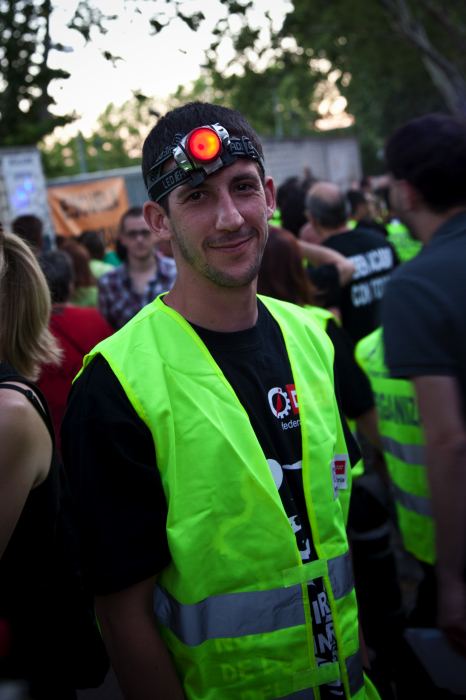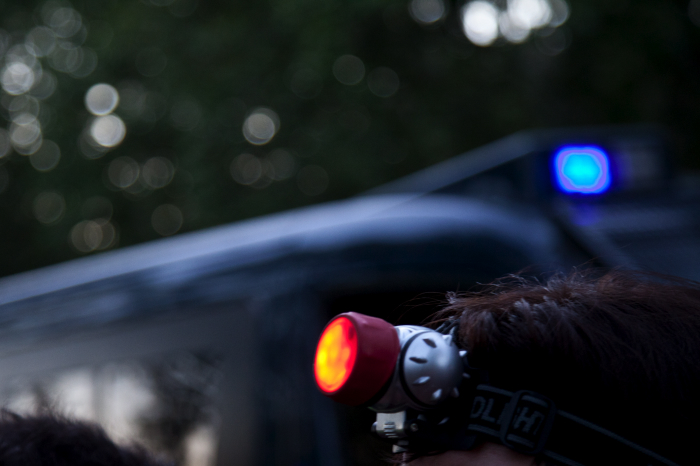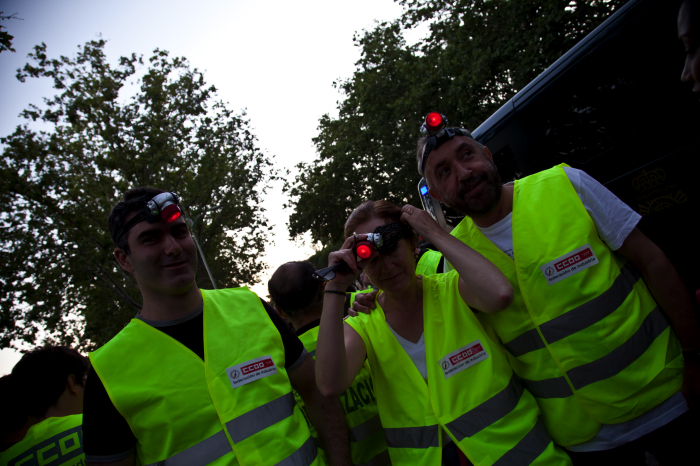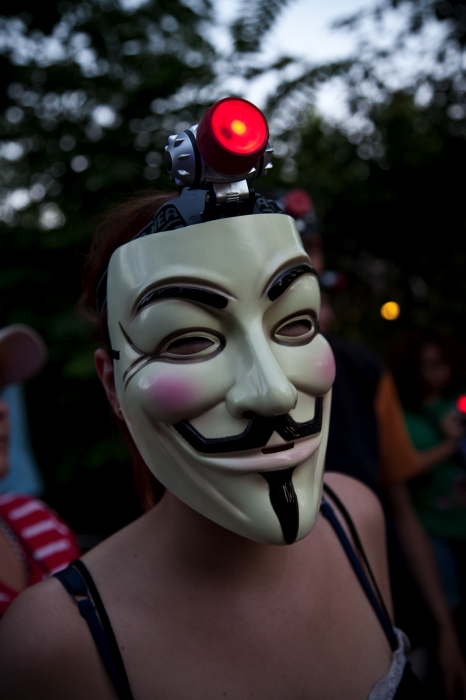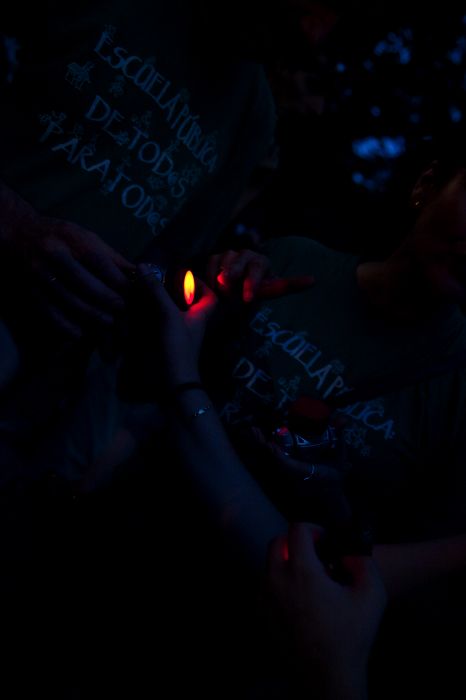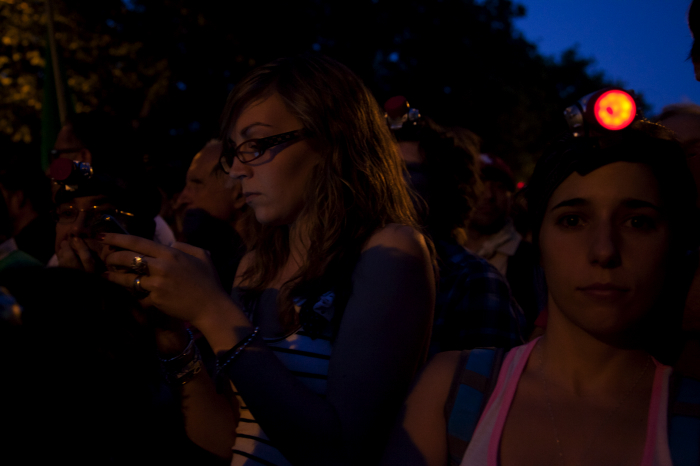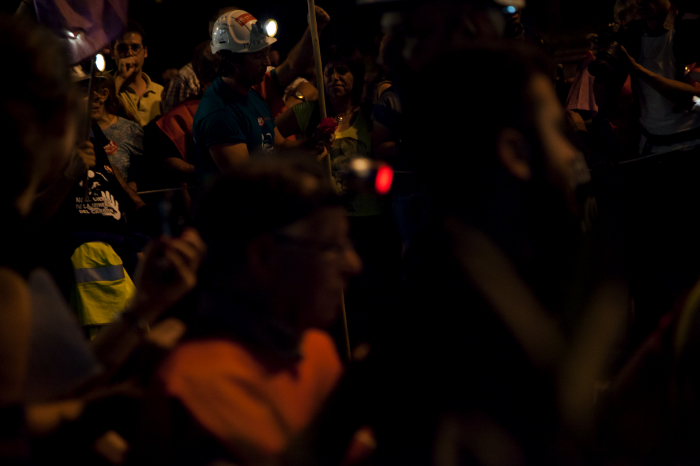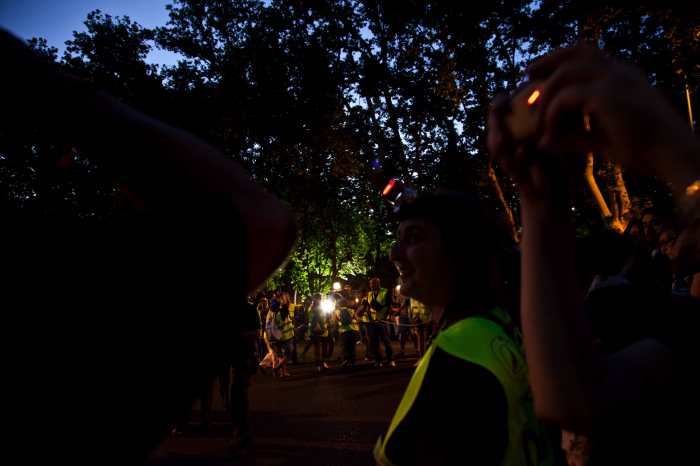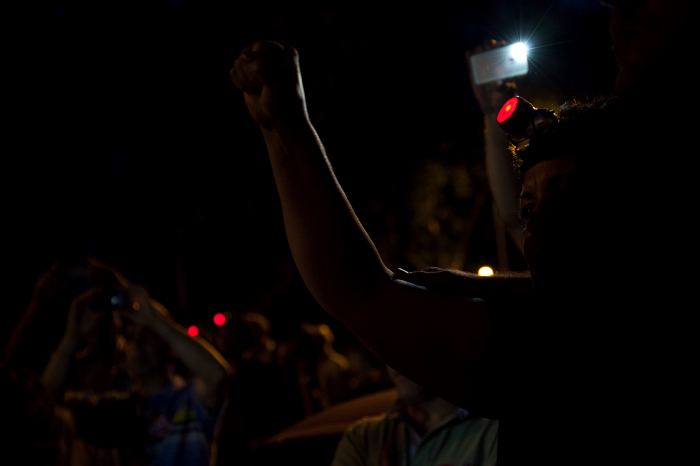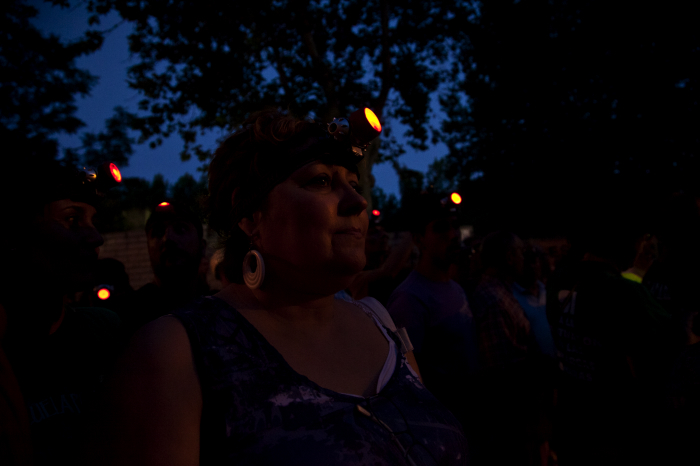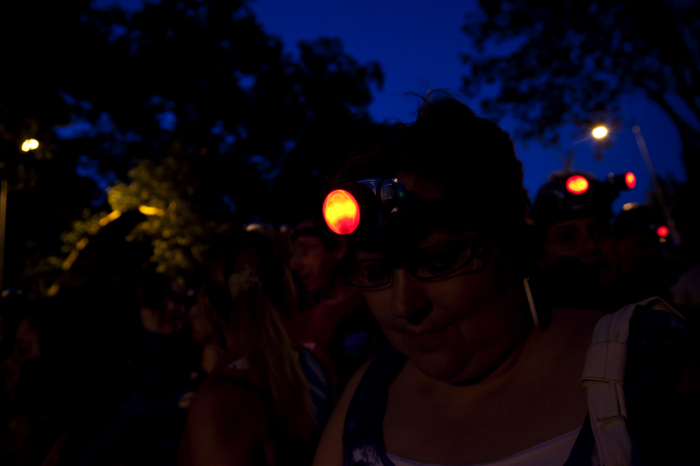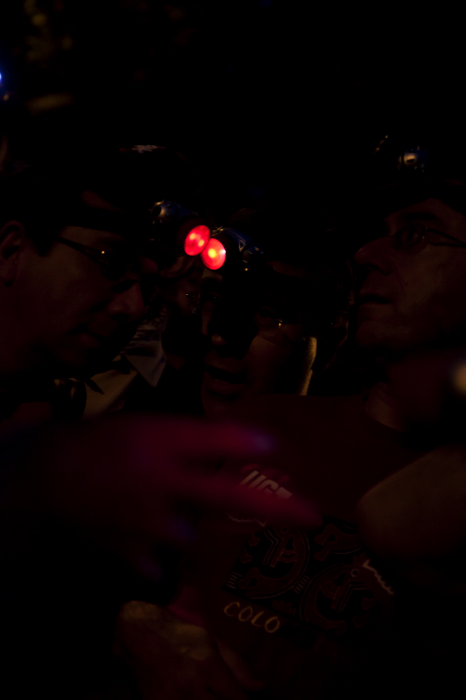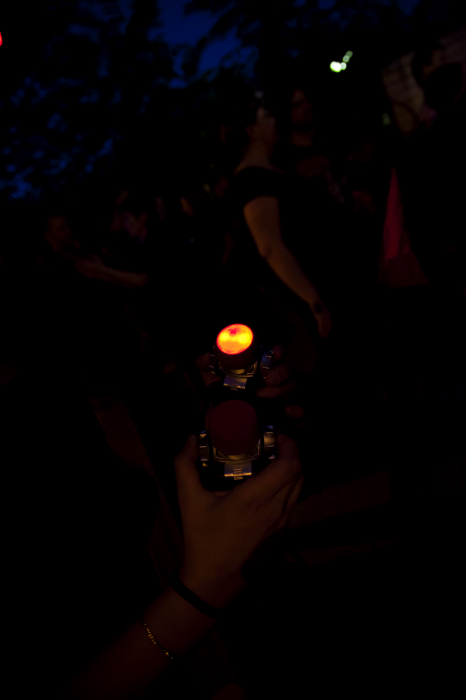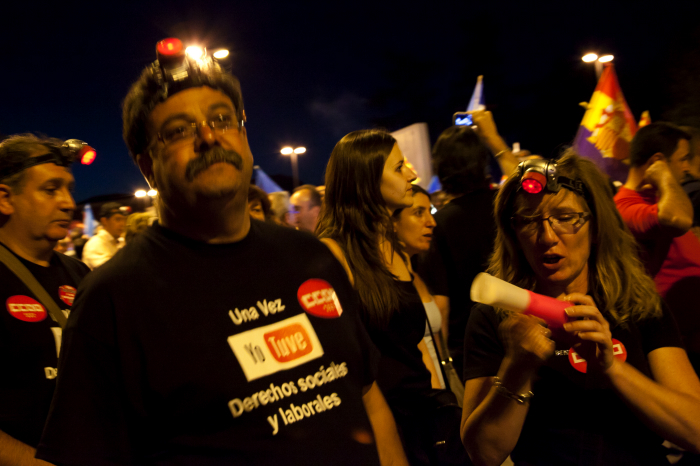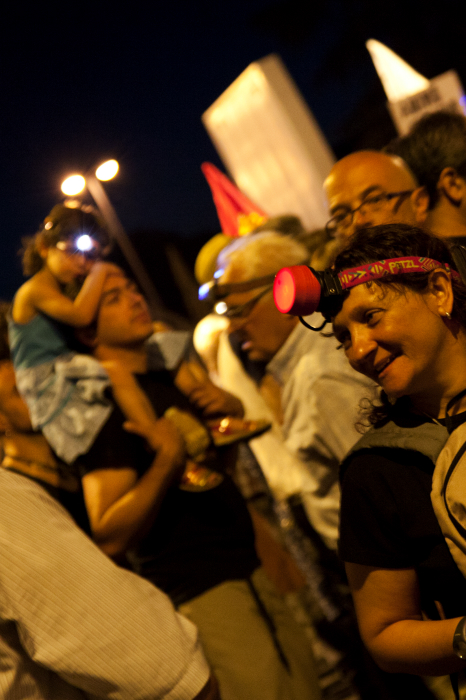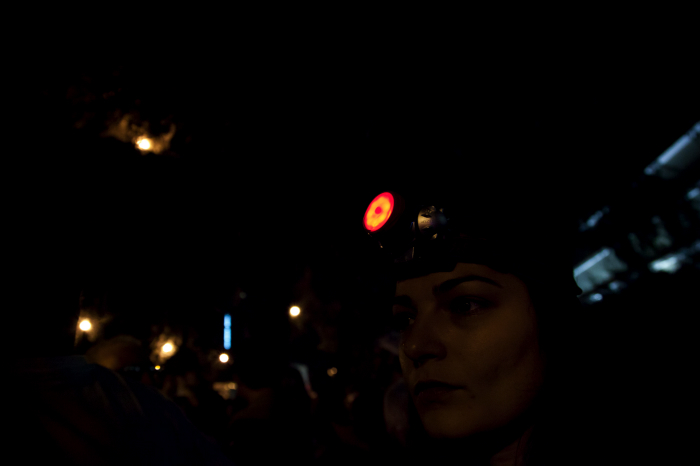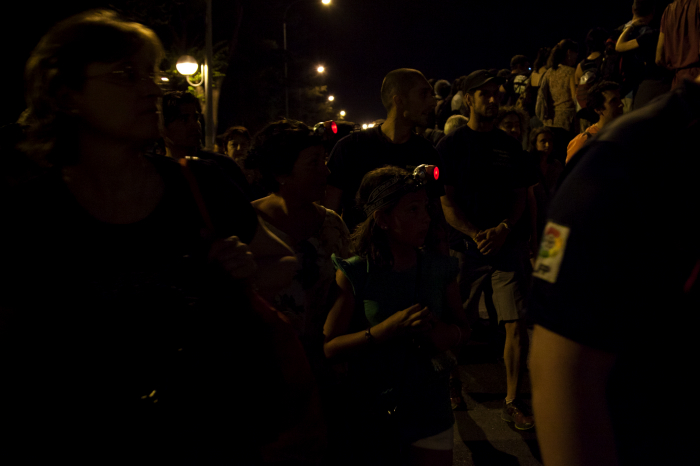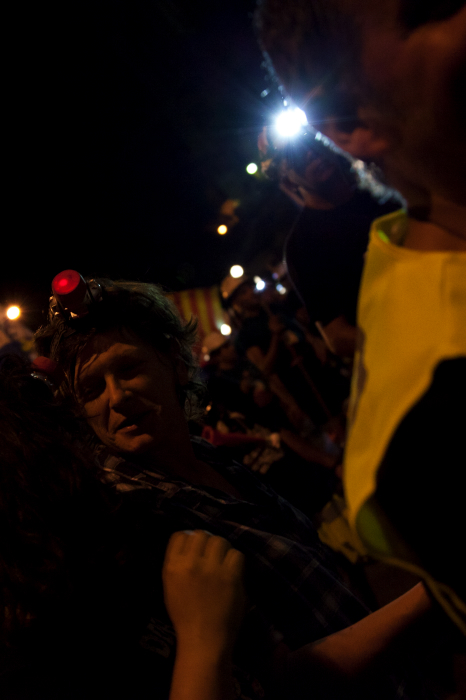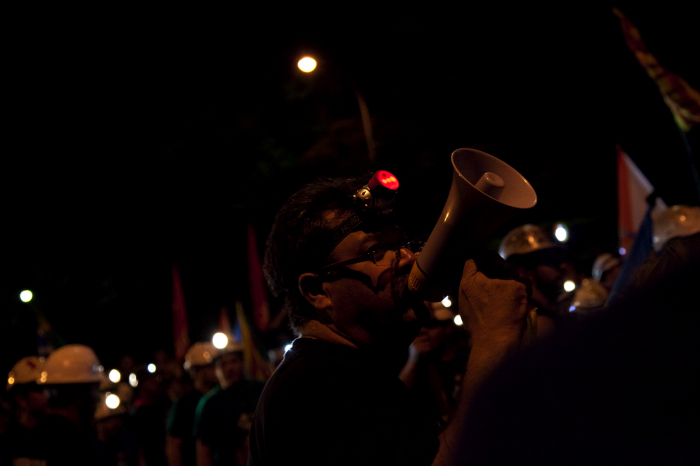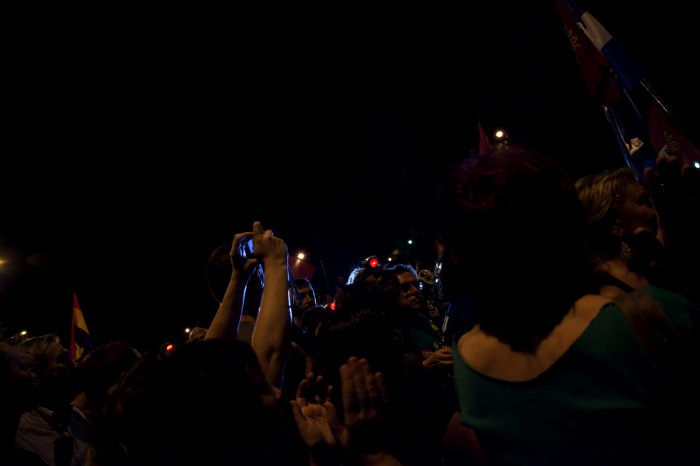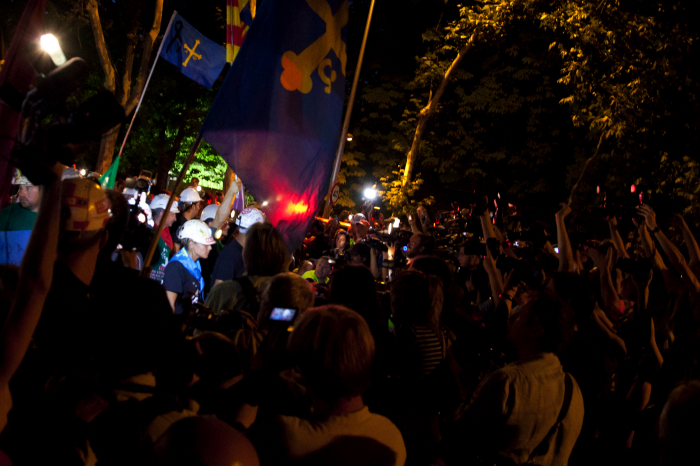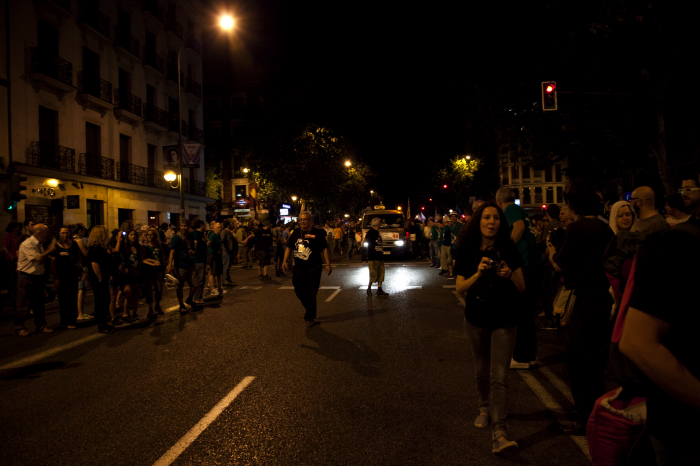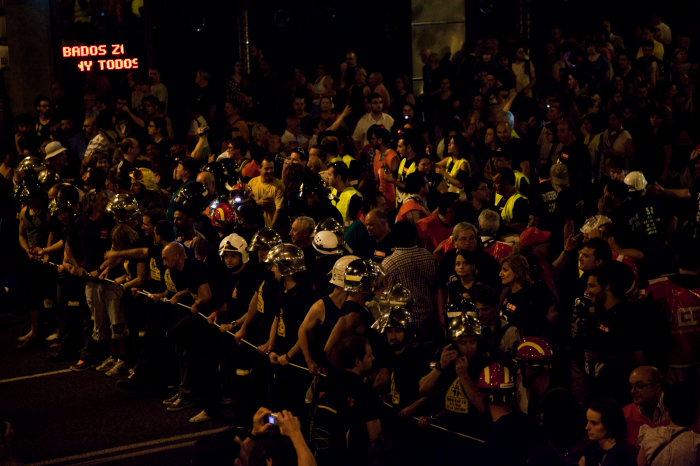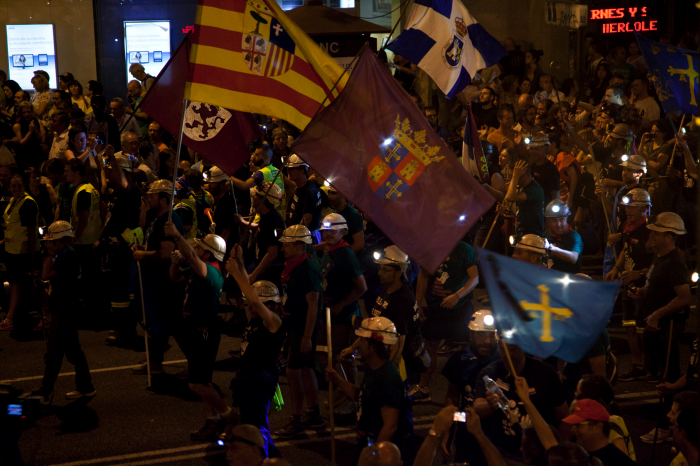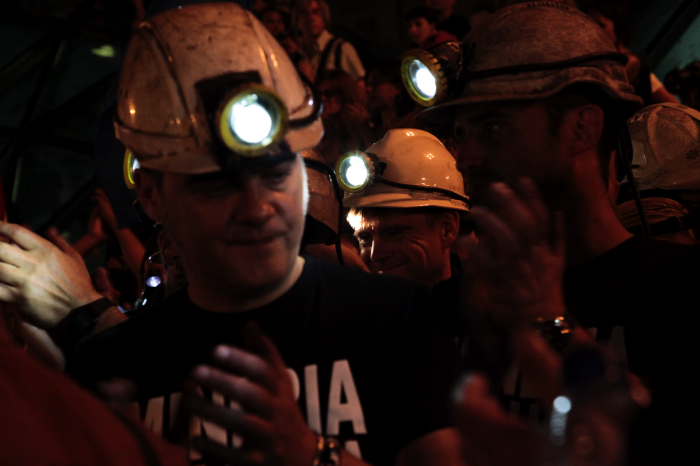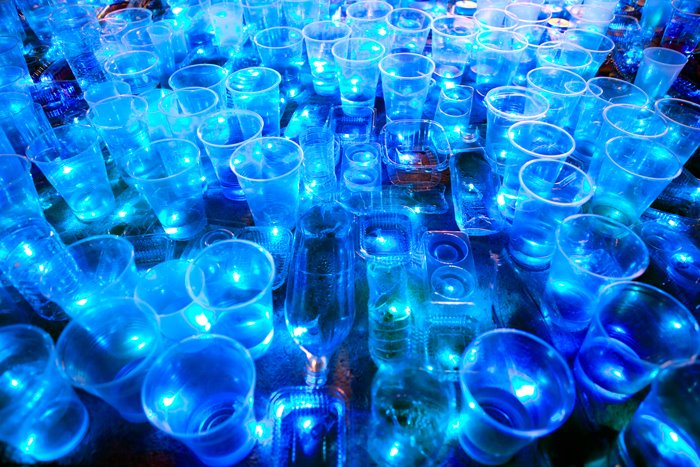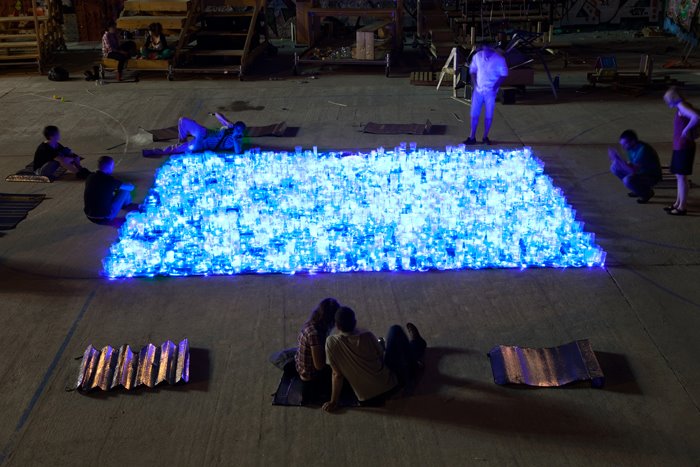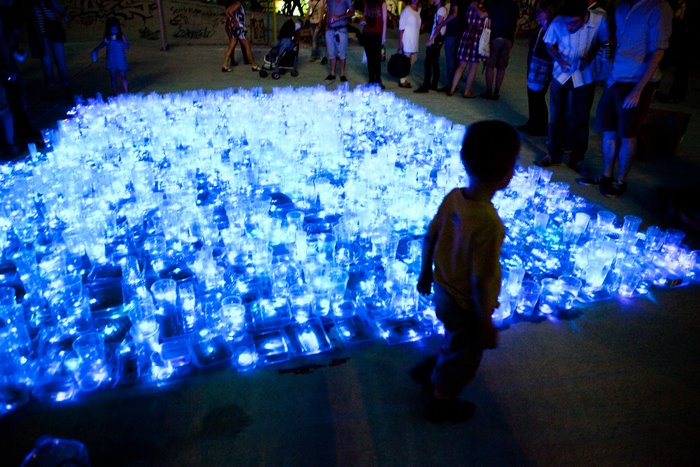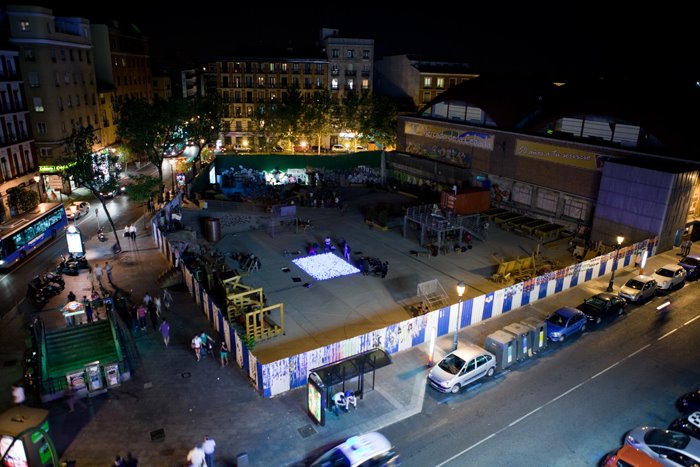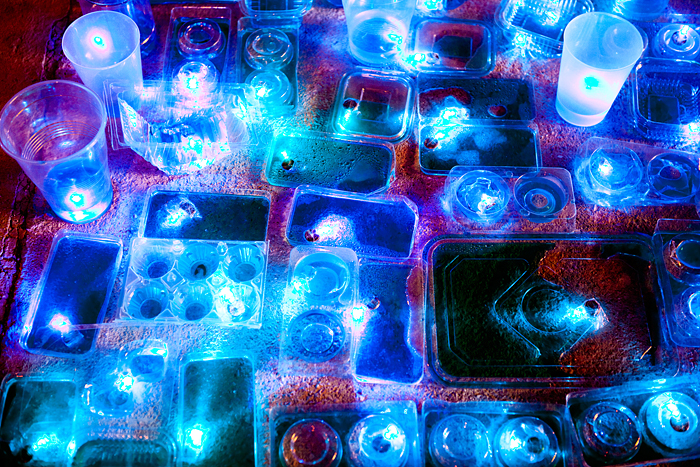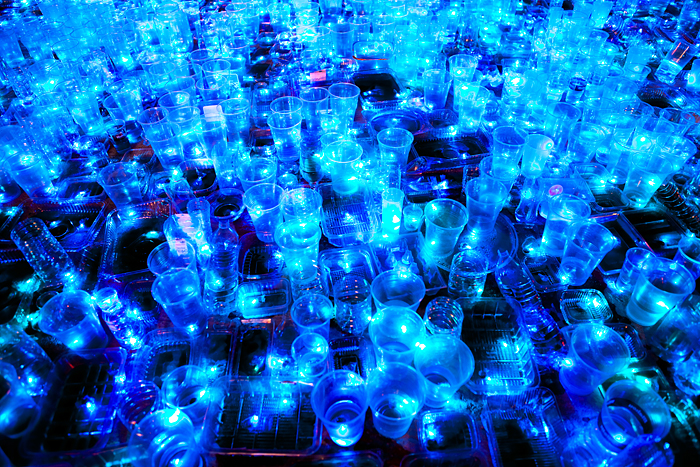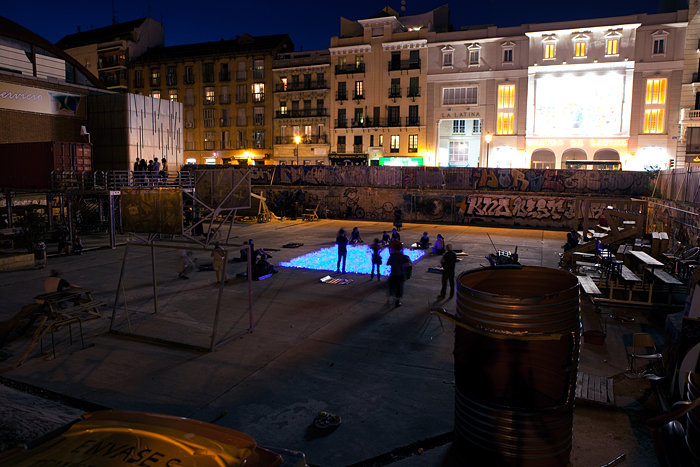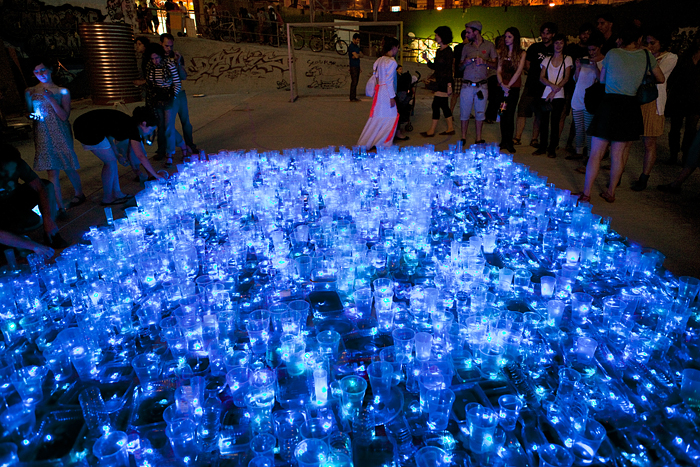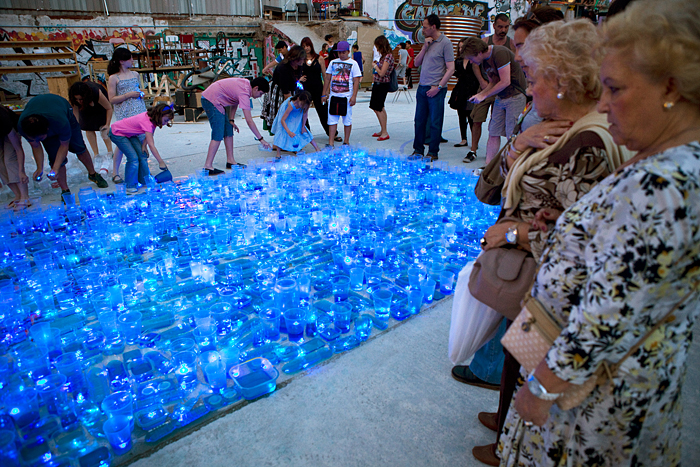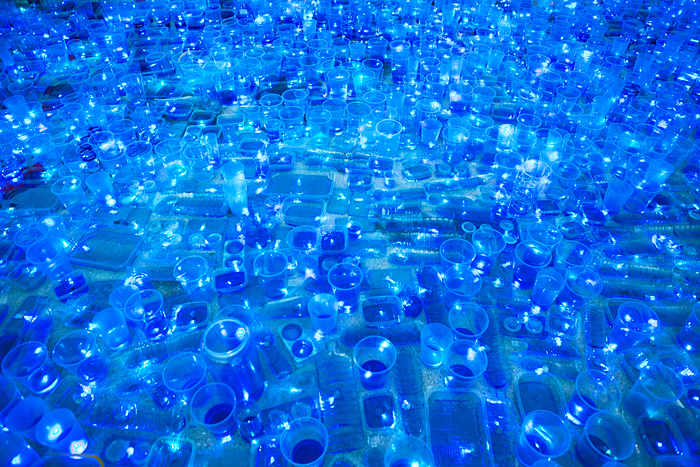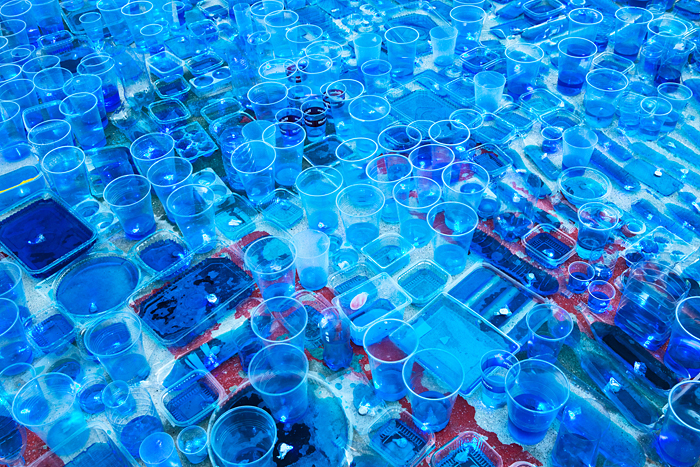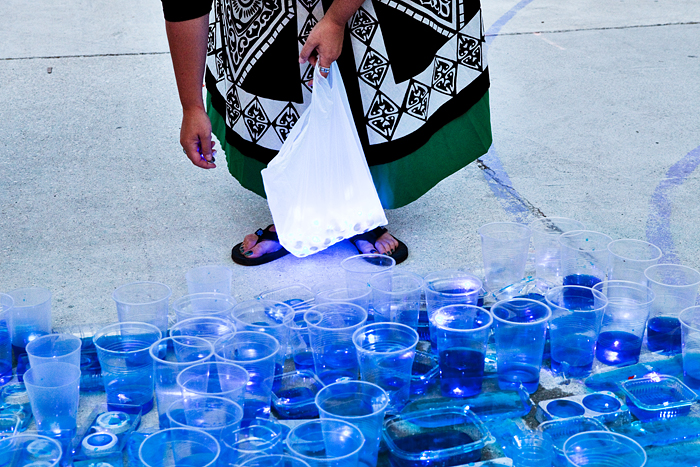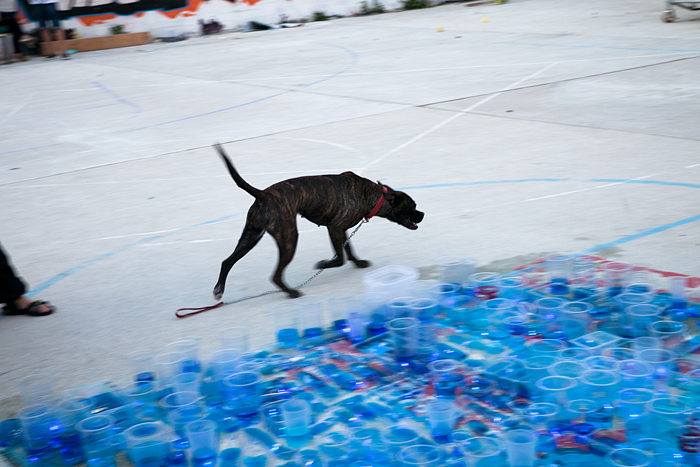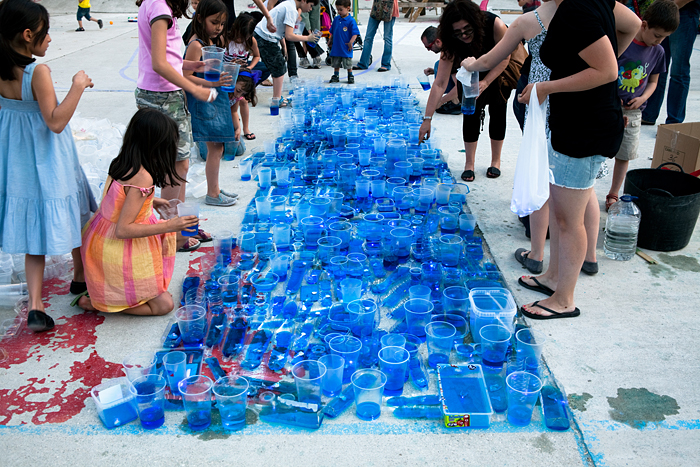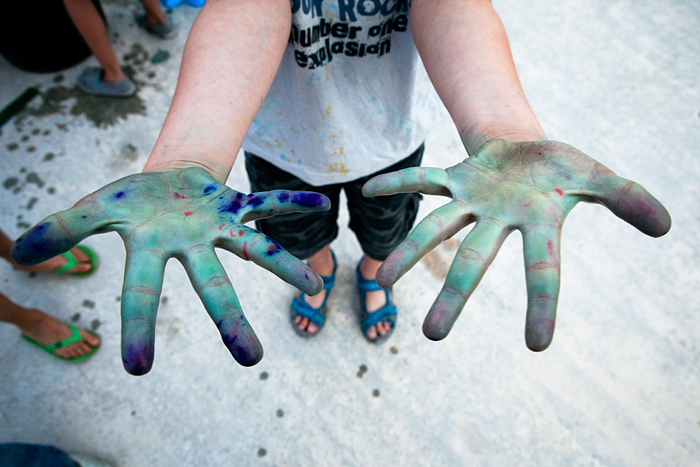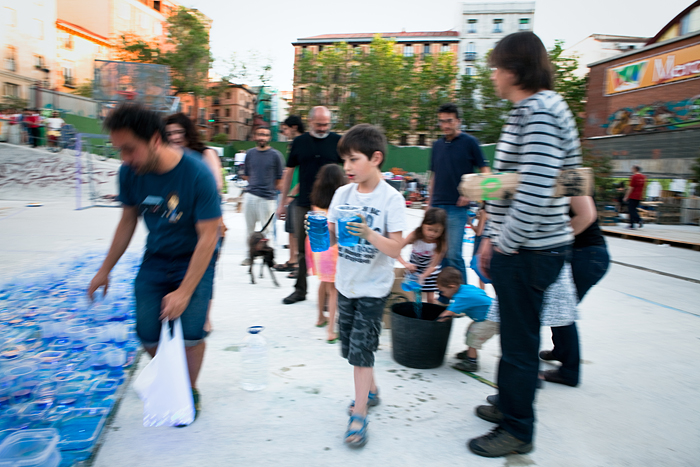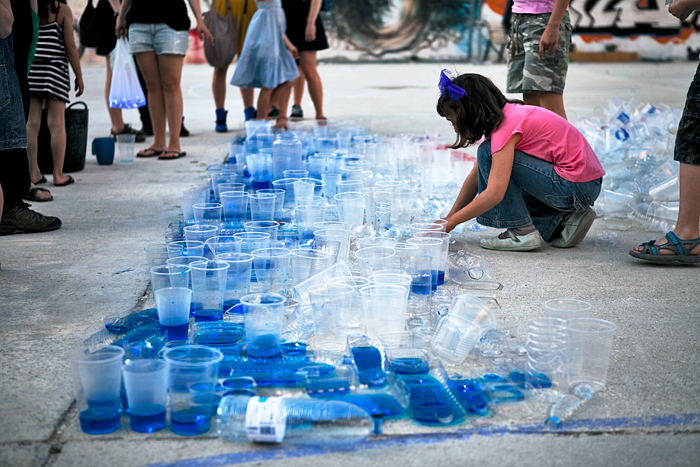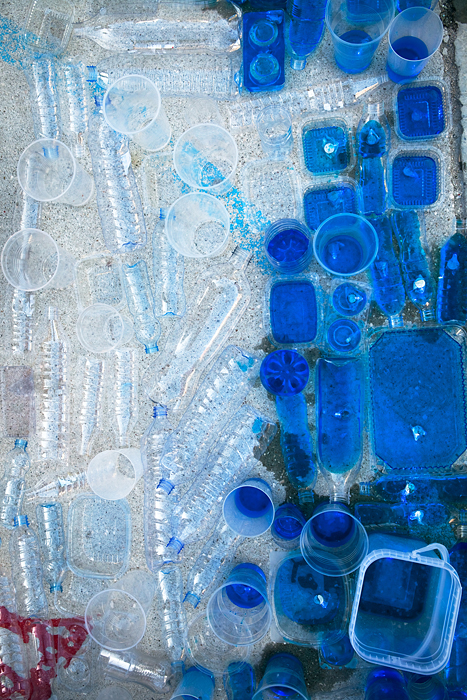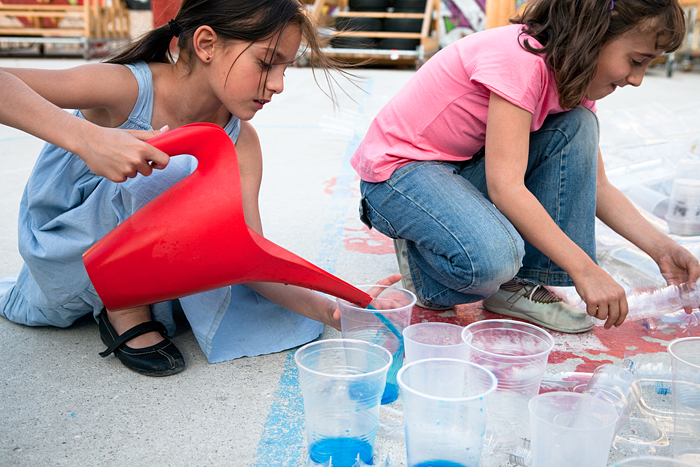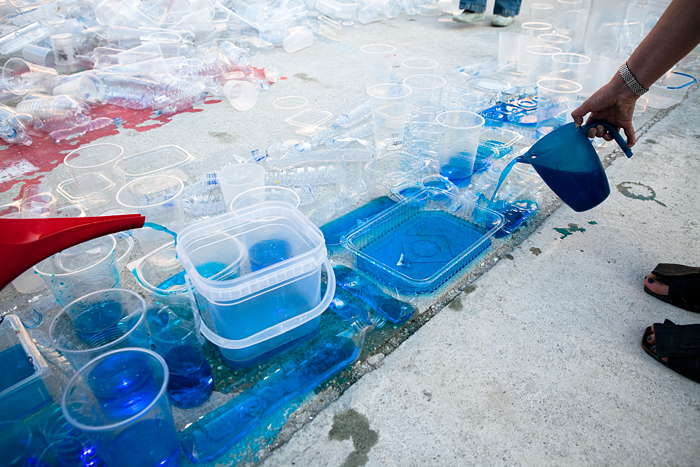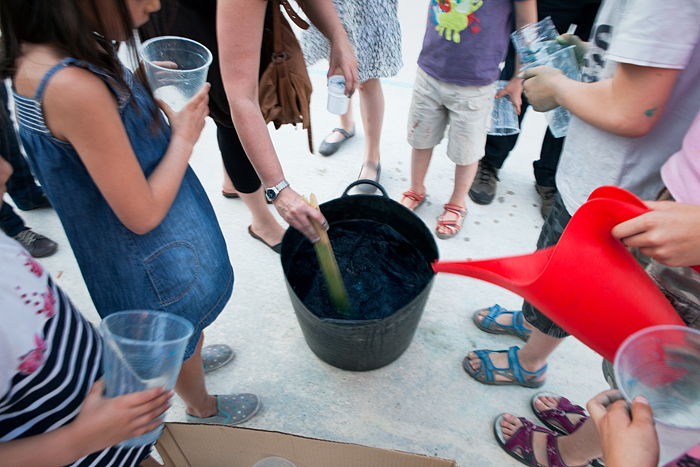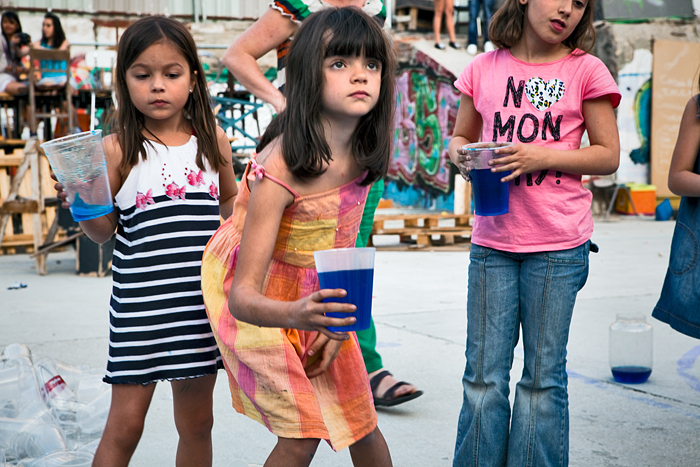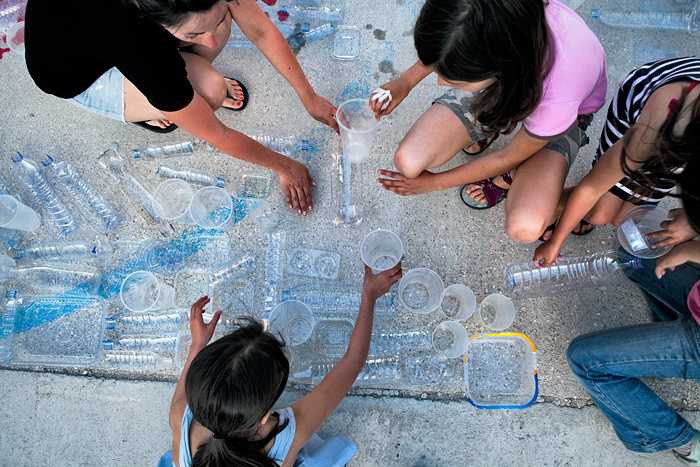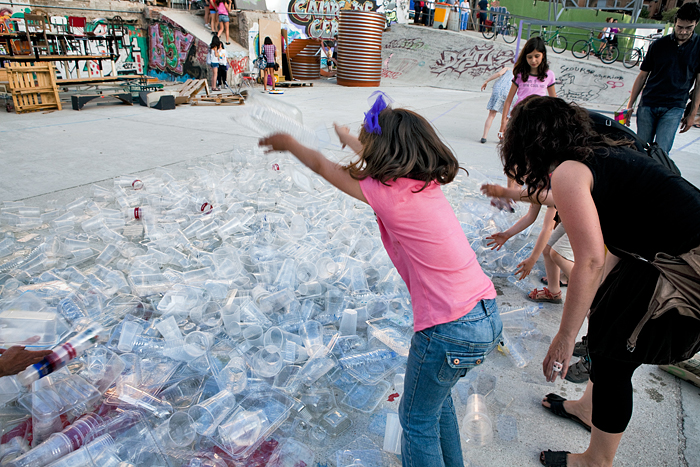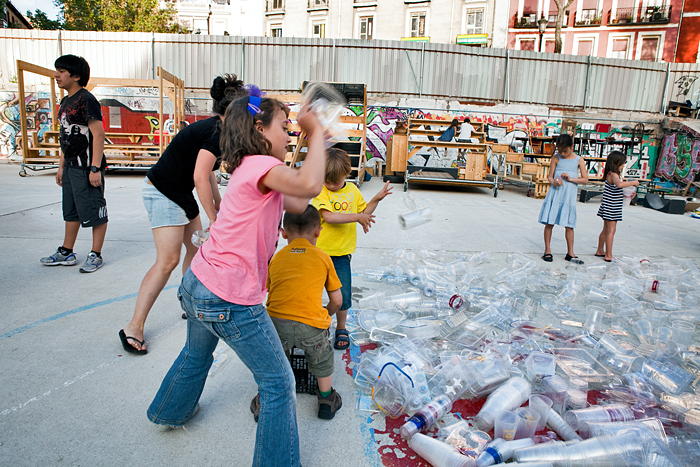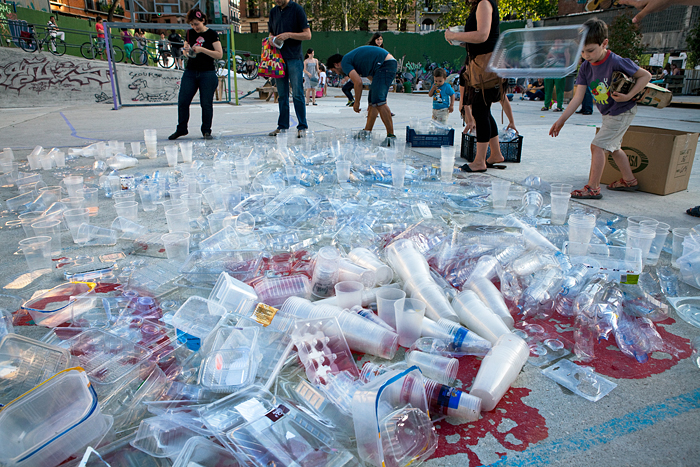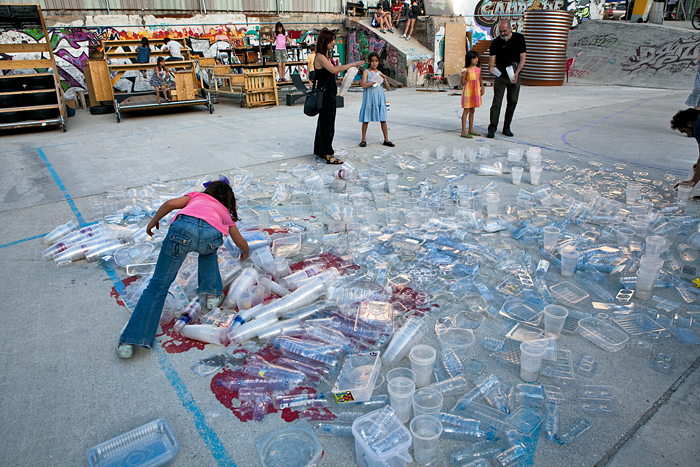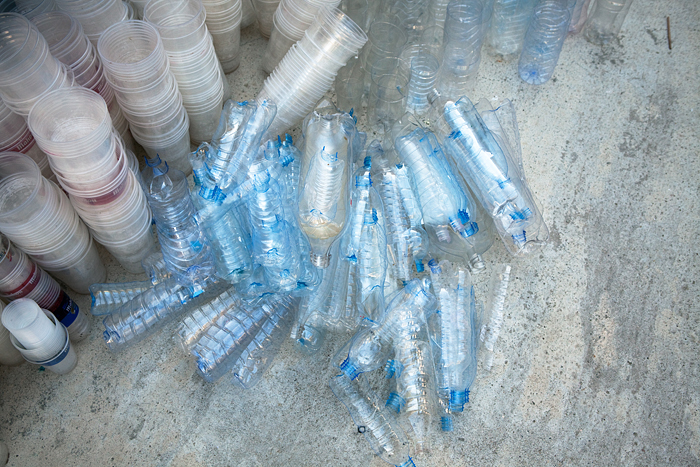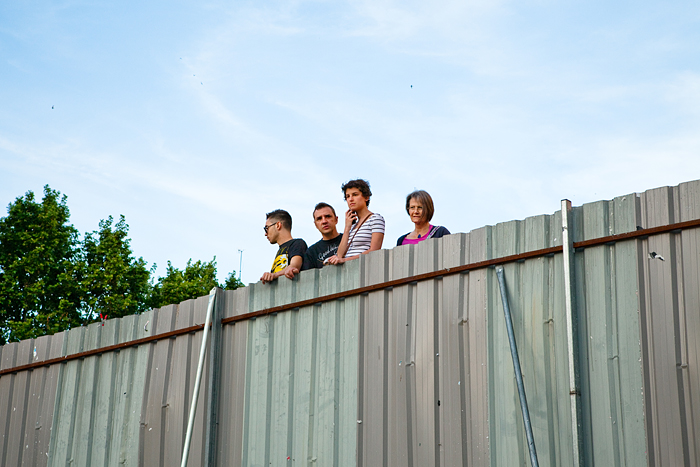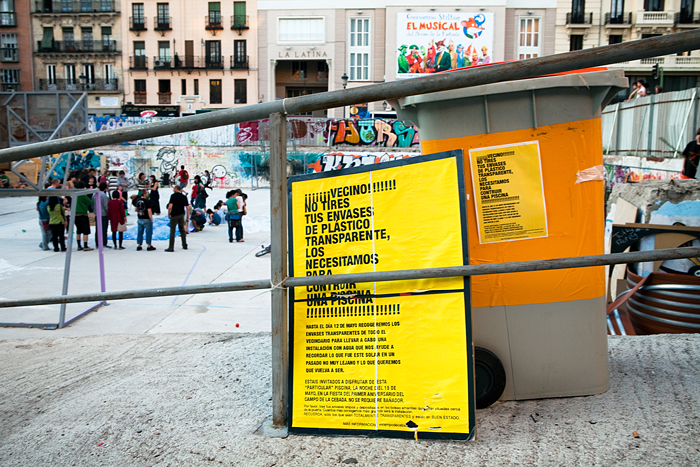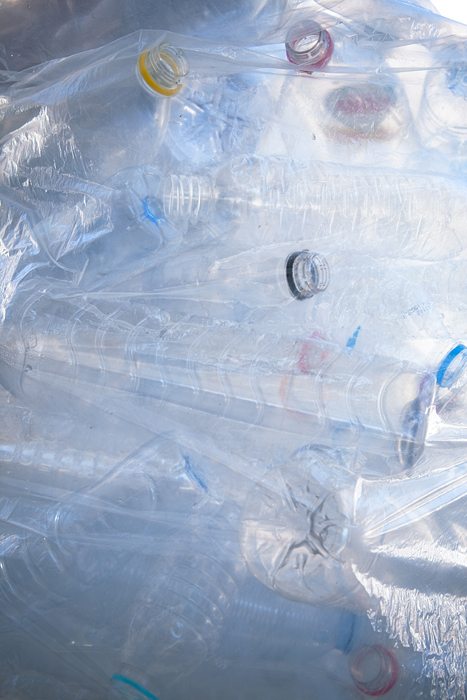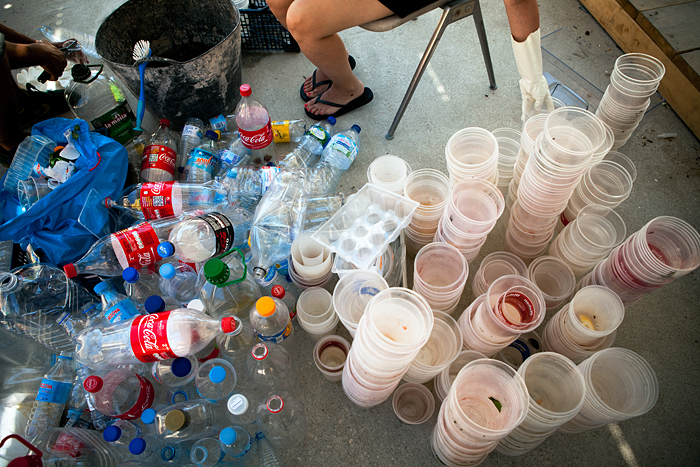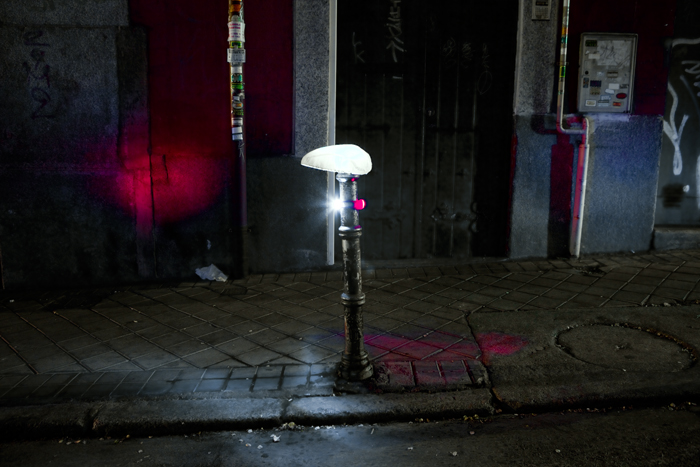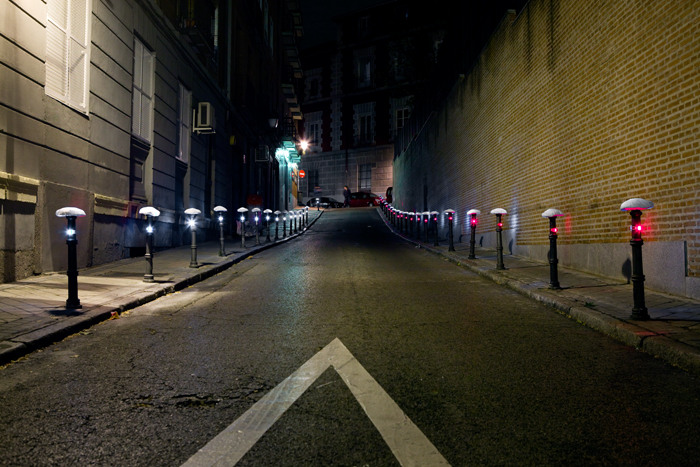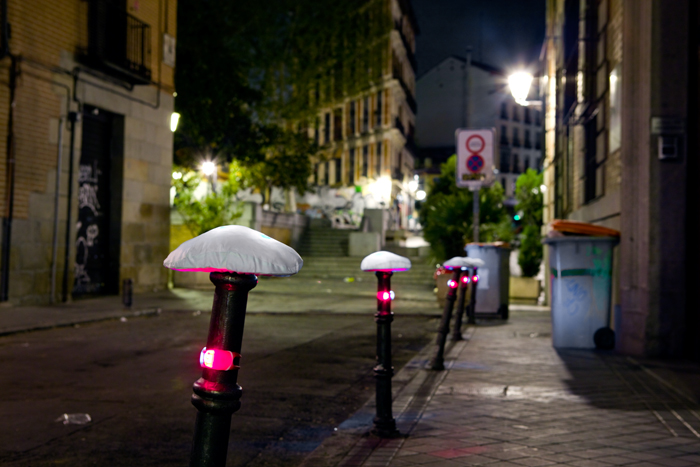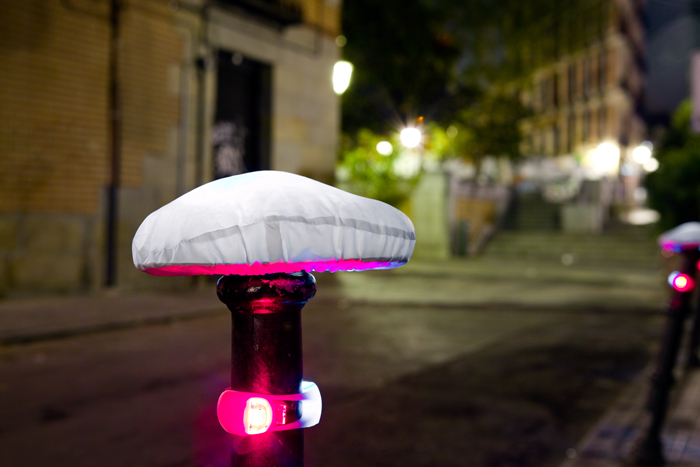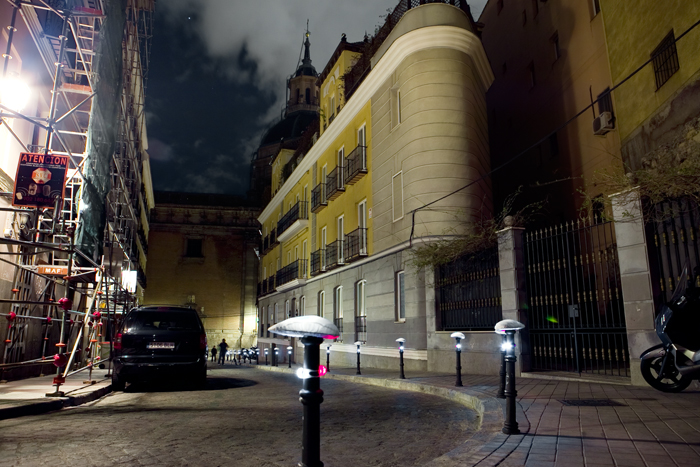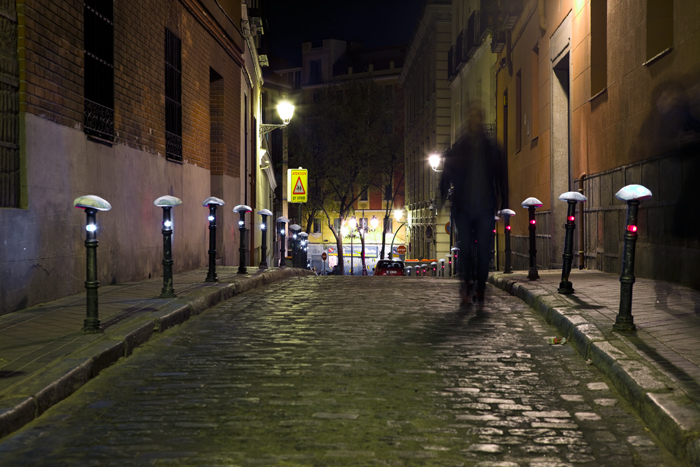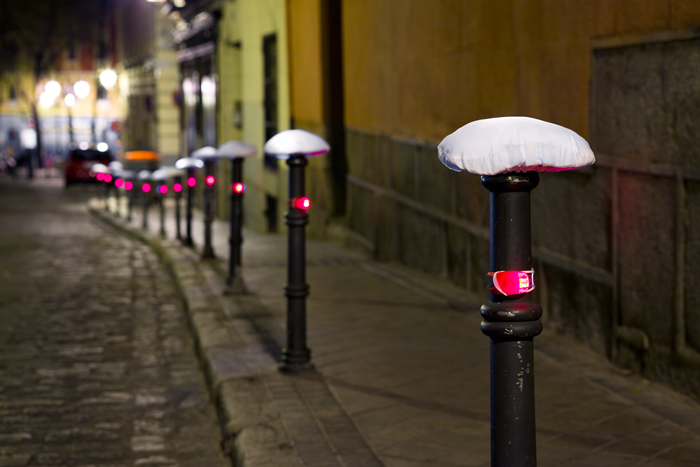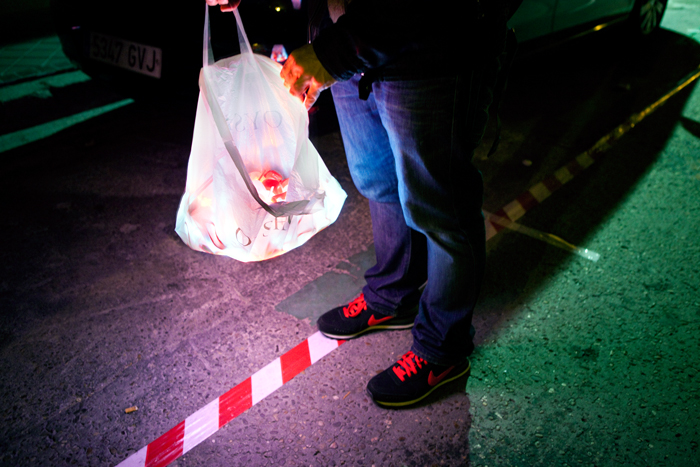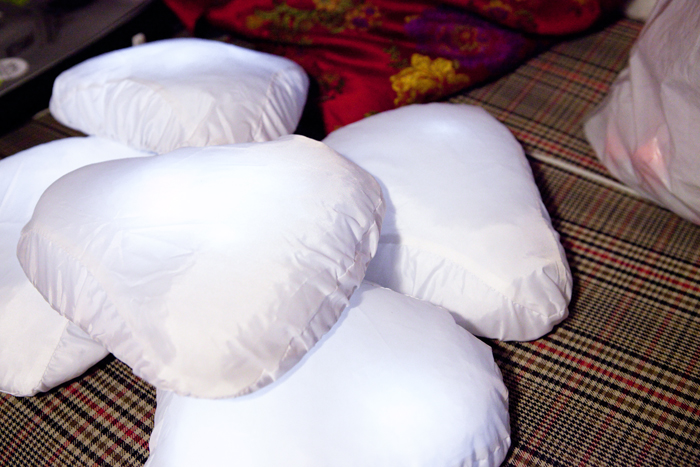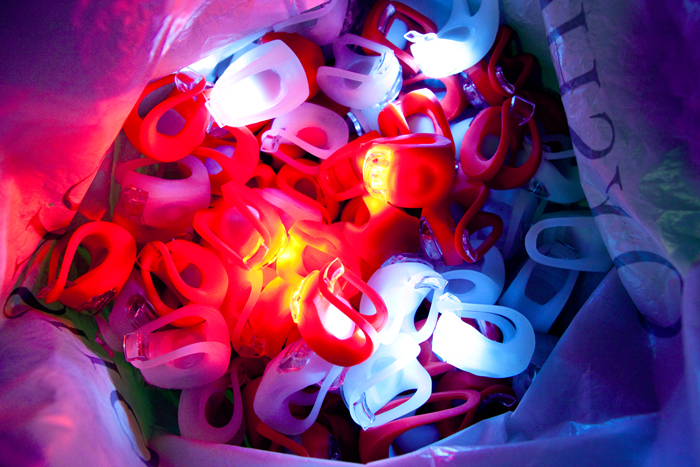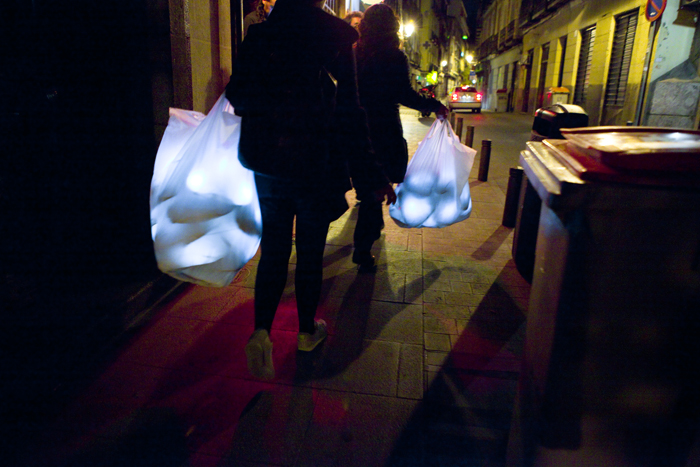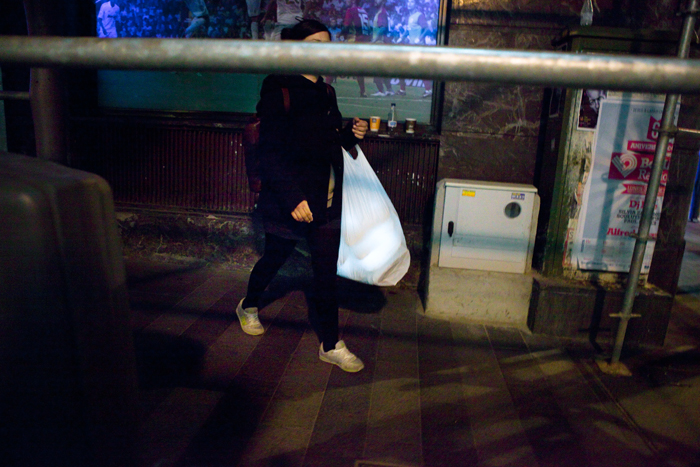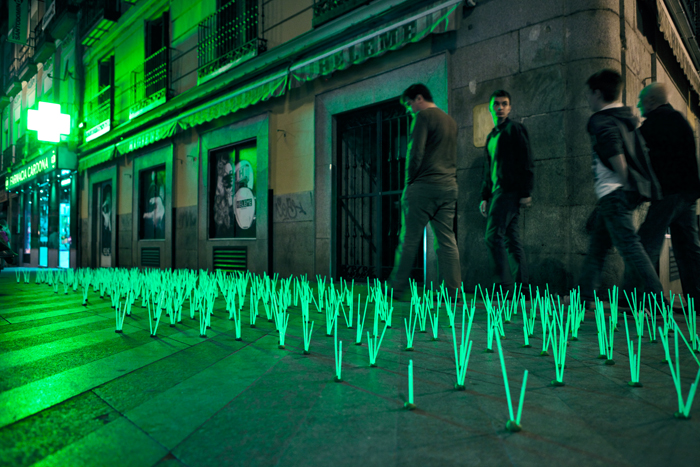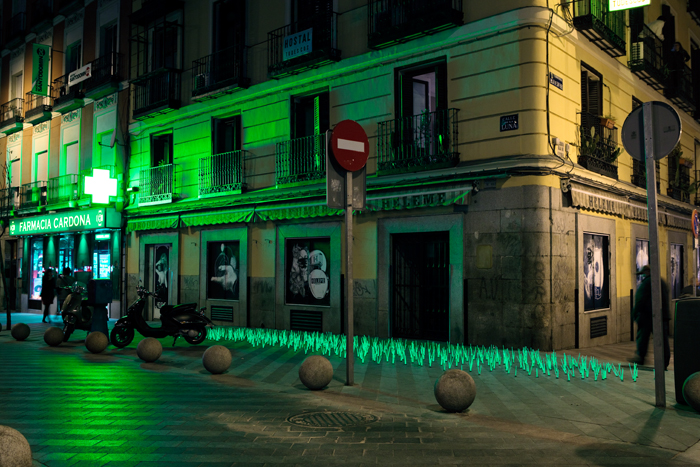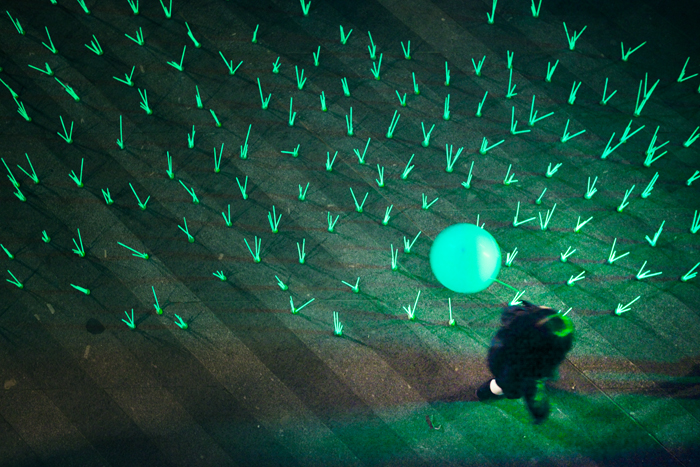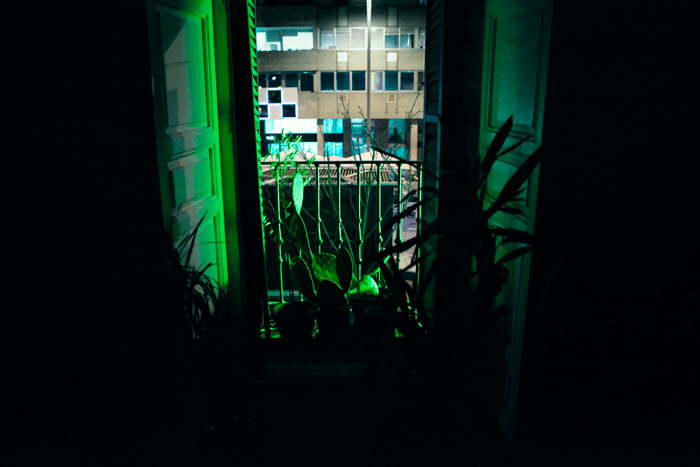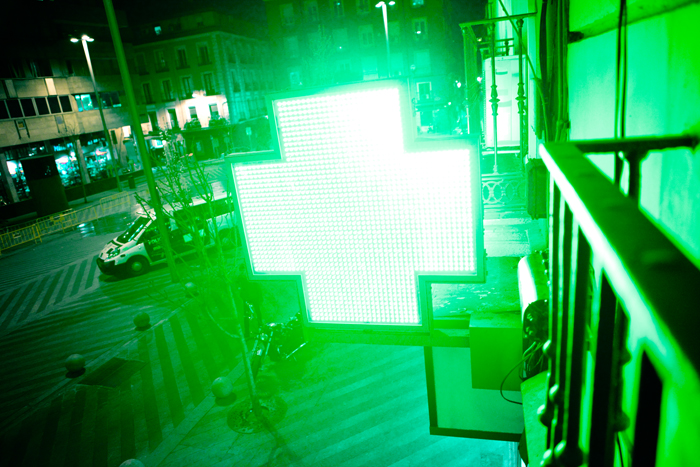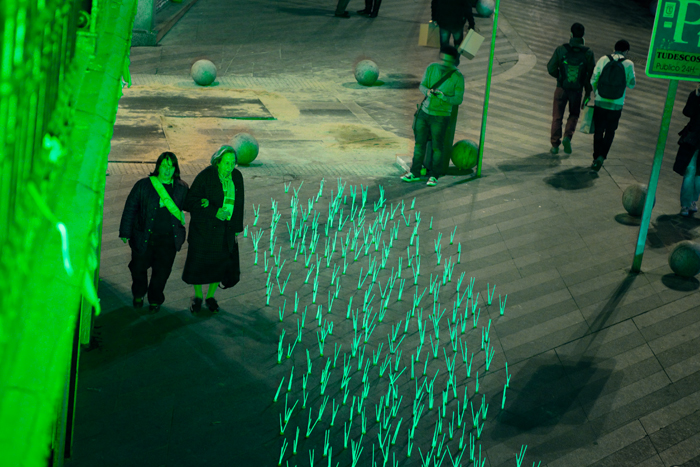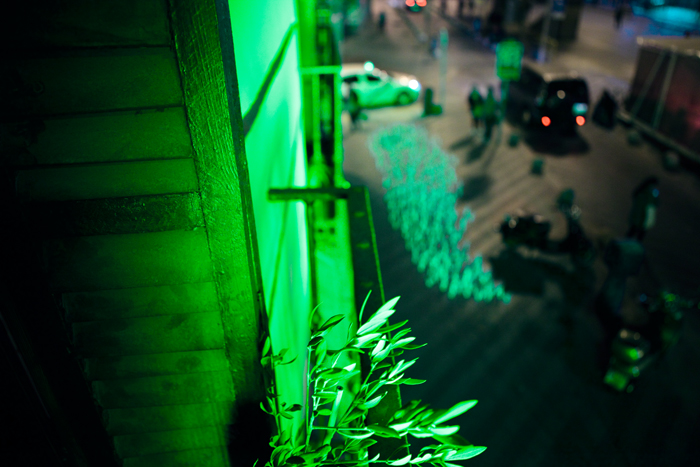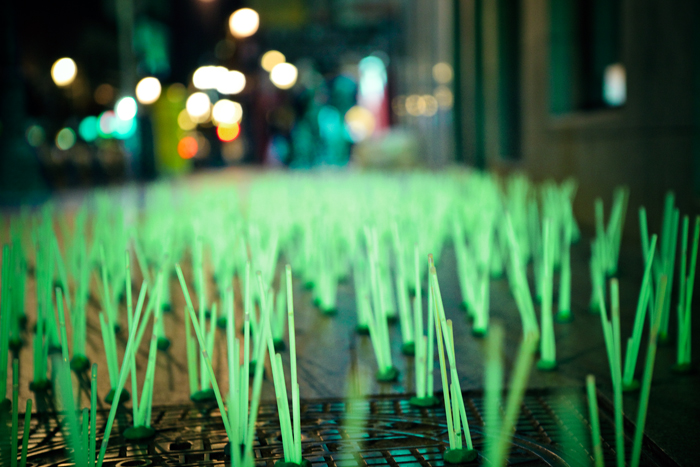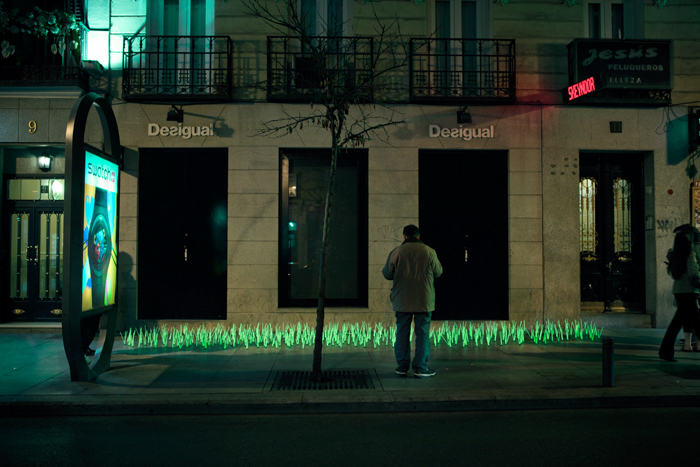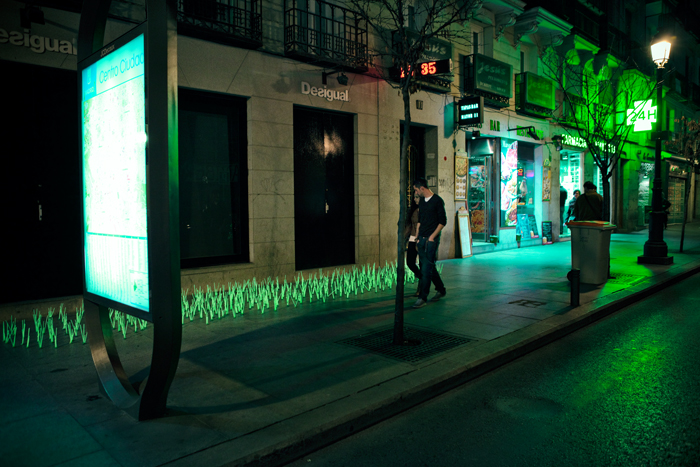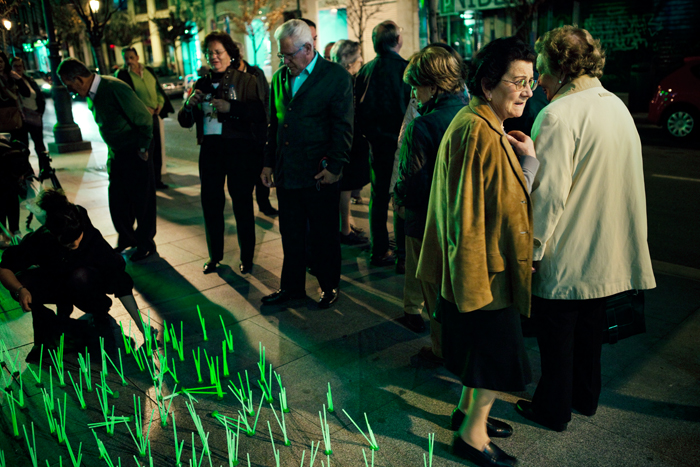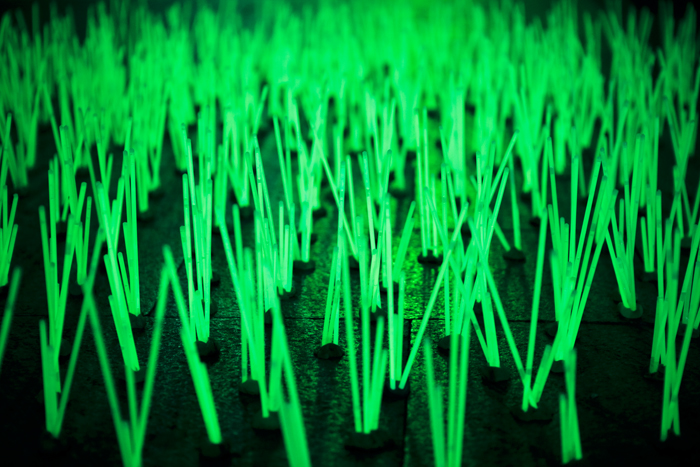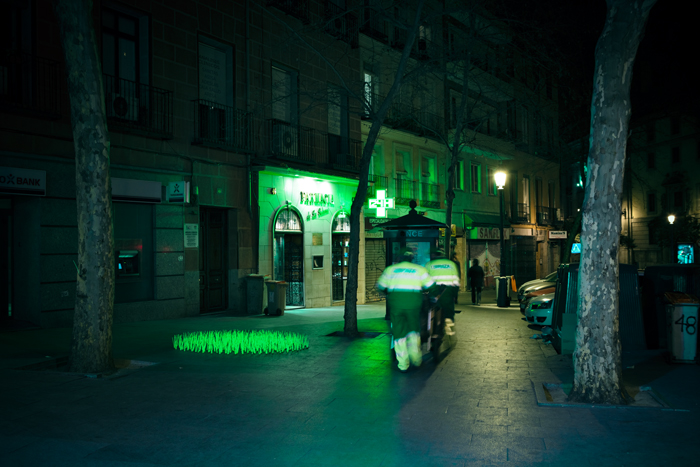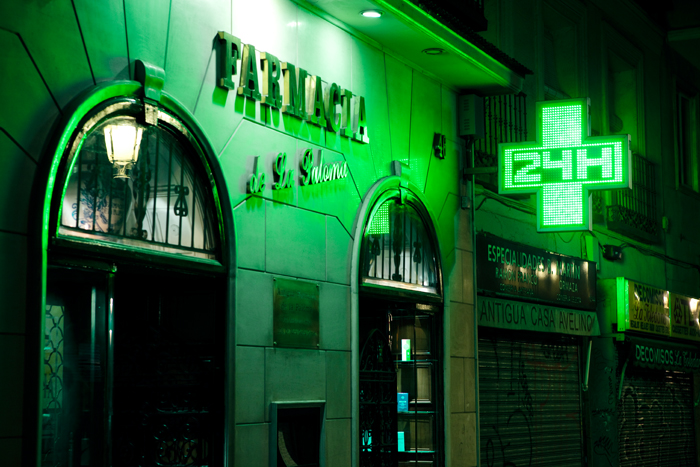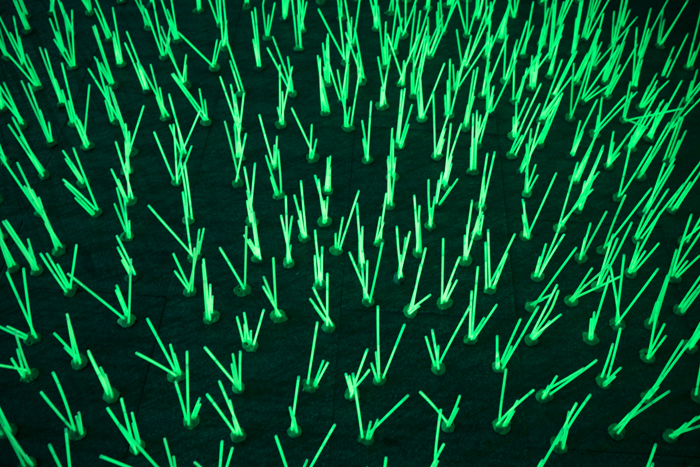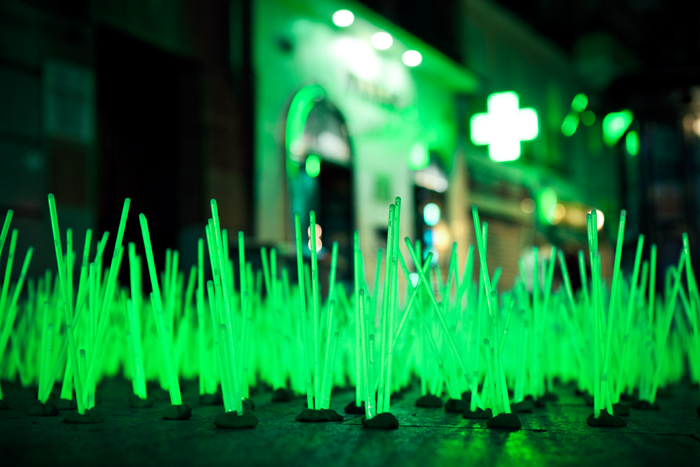Plastic garbage guarding the museum / Basura plástica custodiando museo
 Foto mandada por el museo. 1 mes después.
Foto mandada por el museo. 1 mes después.

Foto mandada por el museo. 1 mes después.
El pasado mes de junio nos fuimos con nuestras luces a Suiza, invitados por el Gewerbemuseum de Winthertur para formar parte de Oh, Plastiksack!, exposición monográfica sobre bolsas de plástico comisariada por Ida-Marie Corell y Susanna Kumschick.
Como siempre, elegimos la calle para trabajar, ya que nos gusta que todo el mundo pueda ver lo que estábamos haciendo y cómo lo estábamos haciendo.
Siendo el tema monográfico las bolsas, quisimos recopilar el mayor número de ellas entre los habitantes de la ciudad, nuestros amigos del museo tuvieron la feliz idea de cambiar bolsas por entradas para visitar las exposiciones, un trato muy interesante que ayudó a conseguir más de 5.000 bolsas y un montón de visitantes deseosos de darse un paseo gratis por un museo de artes aplicadas tan ejemplar y didáctico como es el Gewerbemuseum.
Para nuestra pieza Basura plástica custodiando museo, elegimos las más vistosas y lujosas bolsas entre las miles que nos habían donado y con ellas llenamos dos grandes contenedores que situados a ambos lados de la puerta principal del edificio. Pusimos luz en su interior y las hemos dejado 4 meses para ver cómo evolucionan.
Los primeros días la instalación lució de lo más llamativa y espectacular, todas las bolsas perfectamente colocadas y llenas de aire. A las pocas semanas el espectáculo ya no era tan agradable a la vista y seguramente a los 4 meses se convertirá en algo verdaderamente decrépito.
Esto, lejos de preocuparnos, nos ayuda a dar sentido a una instalación en la que se puede experimentar, de manera visual, la realidad de las bolsas de plástico, unos objetos diseñados con la intención de invitar al consumo y construir una imagen que hable de manera positiva de la marca, pero que una vez usados, si no se reciclan cuidadosamente, se convierten en agentes altamente dañinos e imposibles de hacer desaparecer del medio ambiente.
El día de la inauguración, utilizamos más bolsas de plástico iluminadas para intervenir en los alrededores del museo, llenando con ellas una pequeña plaza en la que creamos un espacio de recogimiento para que la gente se pudiera sentar y dedicarse, por ejemplo, a buscar las de sus tiendas favoritas.
También obsequiamos a los asistentes con bolsas de basura iluminadas y flotantes, que la gente paseó por toda la ciudad, adornando el cielo con pequeñas lunas llenas plastificadas.
Muchas gracias a todo el equipo del museo, Susanna, Sarah, Markus, Serge, Laurin… que nos hicieron sentir como en casa, a los voluntarios que gastaron generosamente su tiempo ayudándonos en el montaje, a nuestros amigos artistas Ida-Marie, Claudia, Marie-Claire, Nils, Dodi… que nos acompañaron y echaron una mano para que todo fuera mucho más fácil y divertido, y por supuesto a los ciudadanos de Winthertur que nos regalaron sus más preciadas bolsas.
Las fotos, en su mayoría, son de Gustavo Sanabria, excepto las que nos ha mandado el museo para ver la evolución de la pieza.
Podeis ver más fotos aquí.
Tiempo de montaje: 3 días.
Daños ocasionados: 0.
Permanencia de la intervención: 4 meses.
———————————————————————–
The past month of June we went to Switzerland with our lights, invited by the Gewerbemuseum of Winthertur to form part of the Oh, Plastiksack!, monographic exhibition on plastic bags curated by Ida-Marie Corell and Susanna Kumschick.
As always, we chose to work in the street, just because we wanted the whole world to be able to see what we were doing and how we were doing it.
The monographic theme being the bags, we wanted to collect the largest number of them from among the inhabitants of the city, our friends at the museum had the wonderful idea of exchanging bags for tickets to visit the exhibitions, a very interesting proposition that helped to collect more than 5,000 bags and a lot of visitors eager to take a free tour of a museum of applied arts as exemplary and didactic as the Gewerbemuseum.
For our piece Plastic garbage guarding the museum, we chose the most colorful and luxurious bags from among the thousands that were donated and with them we filled two large containers that were located on either side of the main door of the building. We placed light inside them and left them for the next 4 months to see how they evolve.
The first few days of the installation were the most striking and spectacular, with all the bags perfectly placed and filled with air. After a few weeks the display was no longer as pleasing to the eye and surely after 4 months it will look truly decrepit
This, far from worrying us, helps us to make sense of an installation which you can experience, in a visual manner, the reality of plastic bags, objects generally created with the purpose of inviting consumption and building an image that speaks positively about the brand, but that once used, if not carefully recycled, they become very damaging and impossible to remove from the environment.
In addition, on the day of the inauguration, we used more illuminated plastic bags to intervene in the surroundings of the museum, filling a small square with them in which we created a gathering space in which the people could sit and dedicate themselves to finding, for example, those of their favorite stores.
In addition, we presented visitors with floating illuminated trash bags, that the people carried throughout the whole city, filling the sky with small plasticized full moons.
Many thanks to the whole team from the museum, Susanna, Sarah, Markus, Serge, Laurin… that made us feel at home, to the volunteers who generously gave their time to help us, to our artist friends Ida-Marie, Claudia, Marie-Claire, Nils, Dodi… that helped and accompanied us, and with whom everything was made much easier and more fun, and of course to all the citizens of Winthertur that gave us their most precious bags and kept us company during the set-up.
The majority of the photos are by Gustavo Sanabria. Except for some that the museum has sent us in which the installation can be seen to be losing its attractiveness.
More pictures here.
Time of installation: 3 days.
Damages: none.
Exhibition time: 4 mounths.

